Luxury Ant Farm: the MANTsion
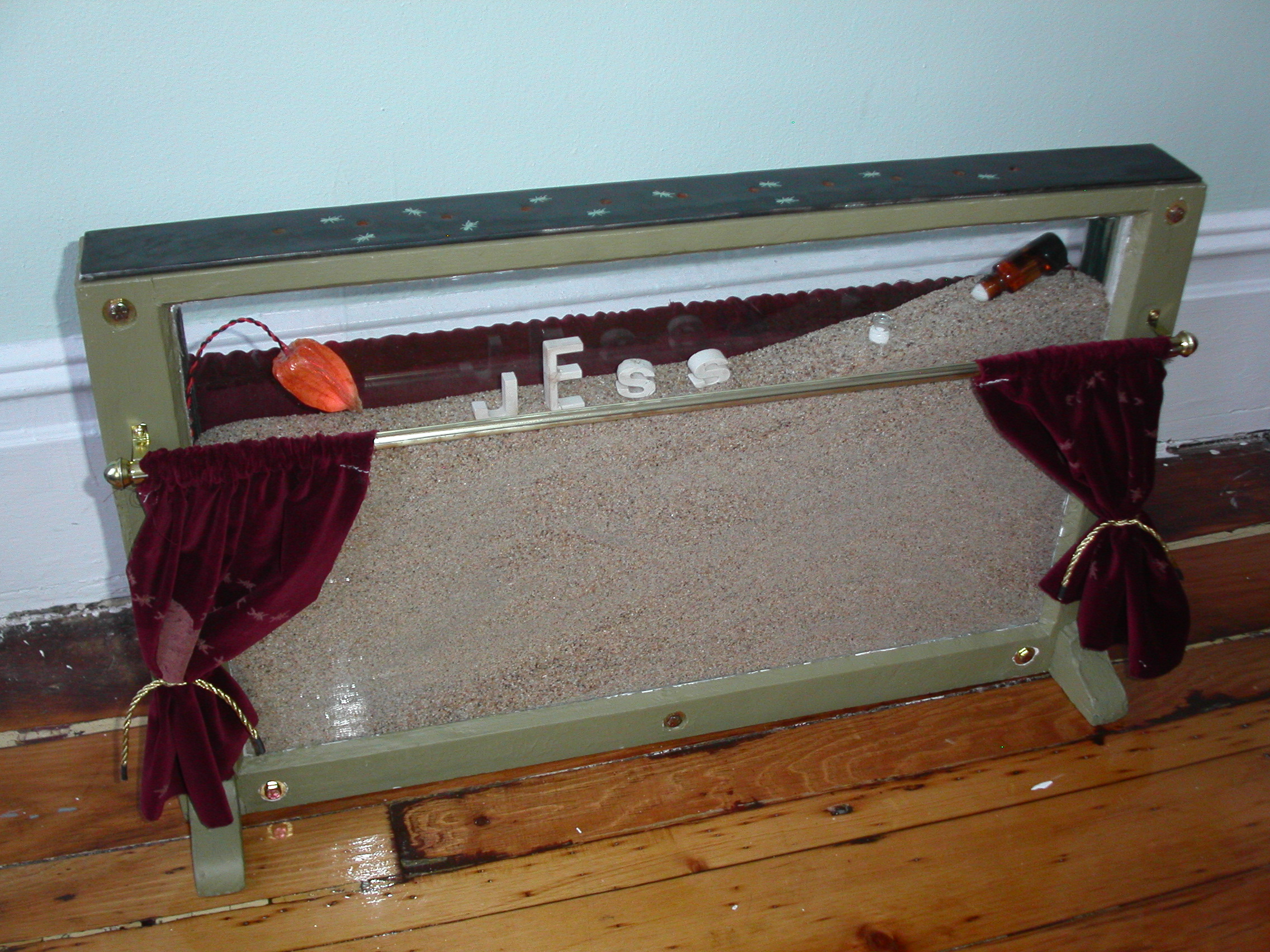
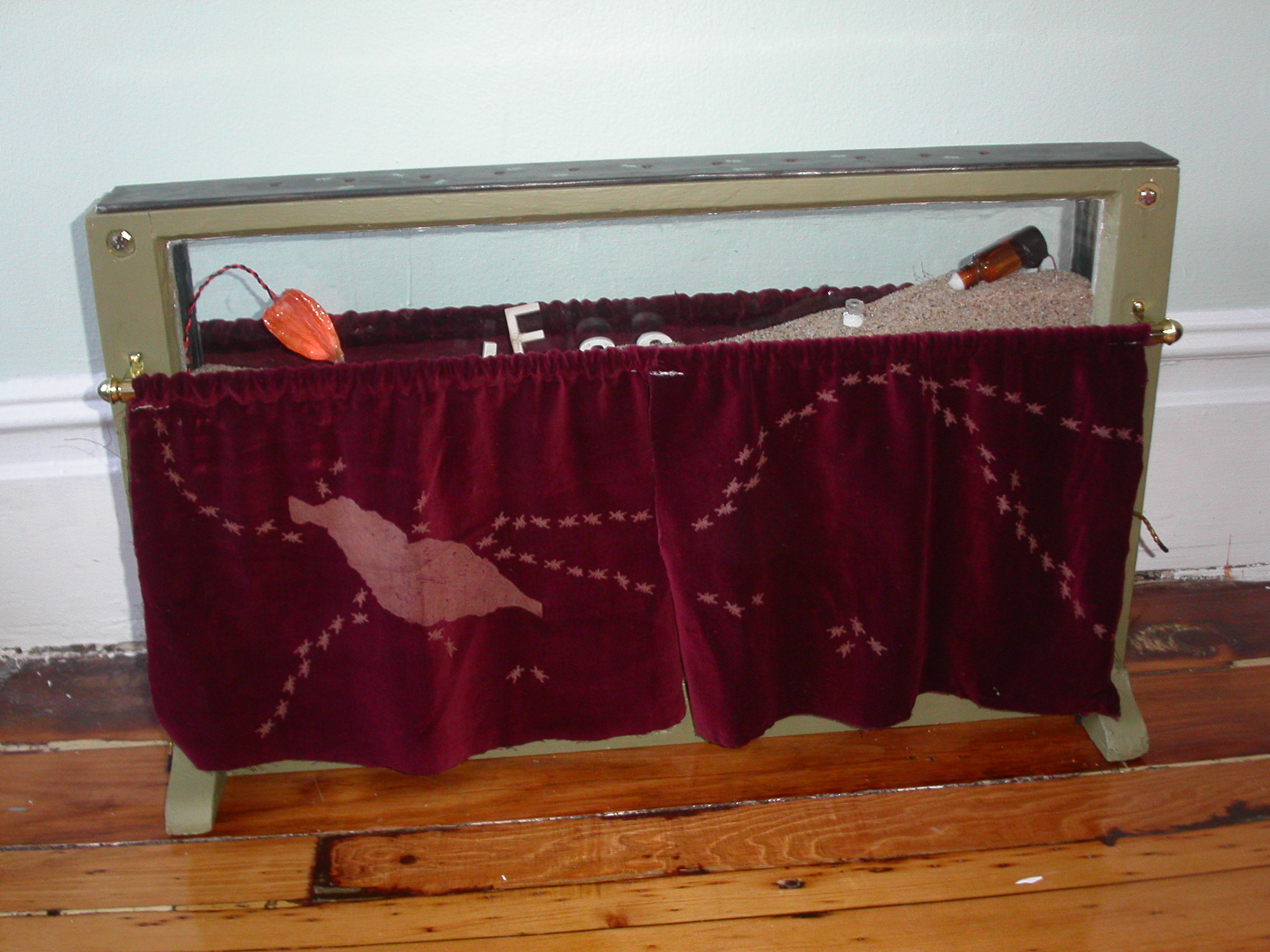
A few weeks ago a friend of mine was reminiscing about their old ant farm and so I decided to make an ant farm and give it to them as a gift.
This ant farm is made from old windows, has a warm LED "sun", some structures for the ants to play on, and is tricked out with a few laser etched/cut accouterments that hopefully make this more than just any regular ant farm. I like to think of it as a luxury ant farm, or mANTsion.
This ant farm is made from old windows, has a warm LED "sun", some structures for the ants to play on, and is tricked out with a few laser etched/cut accouterments that hopefully make this more than just any regular ant farm. I like to think of it as a luxury ant farm, or mANTsion.
Background and Materials
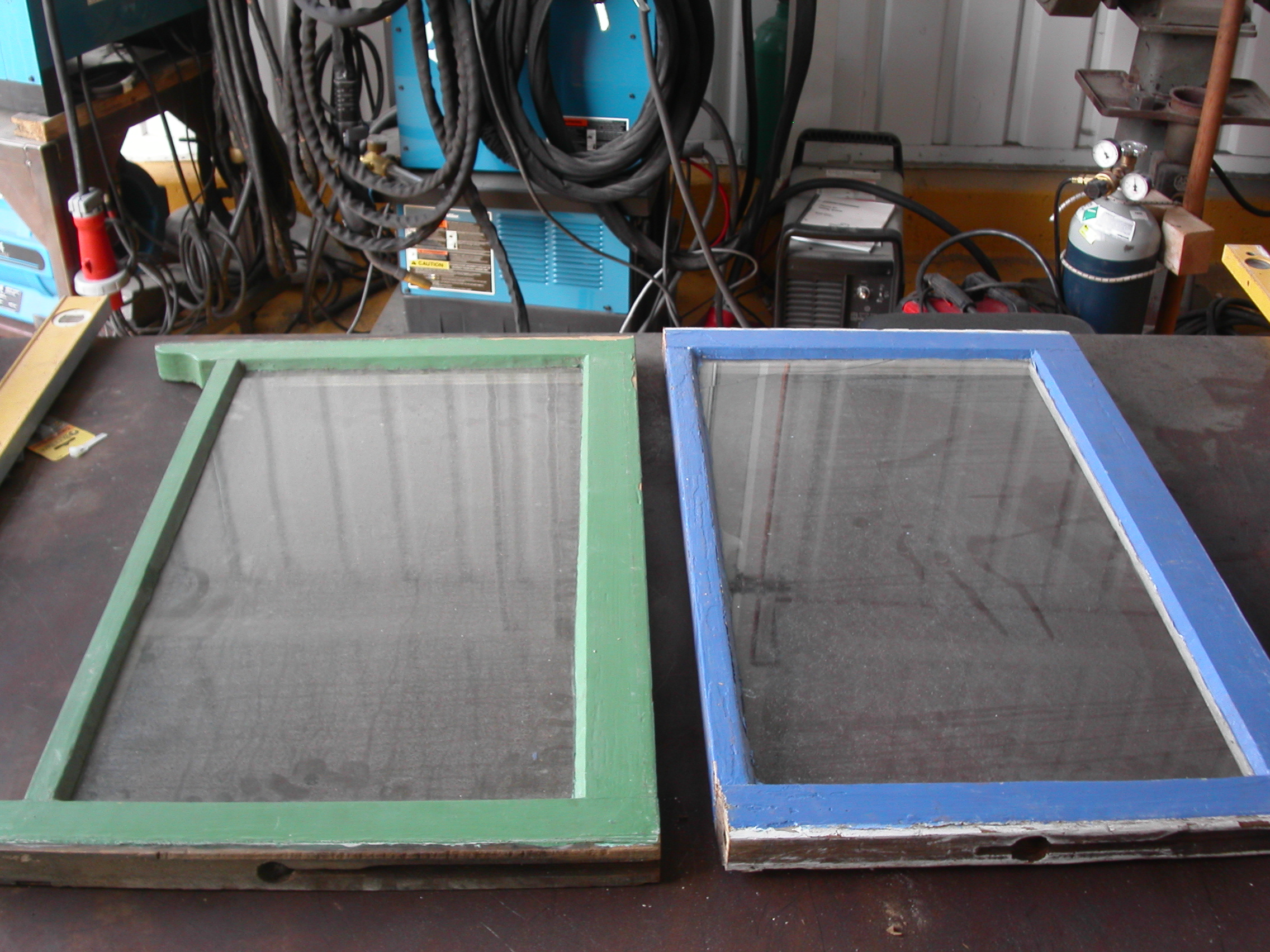
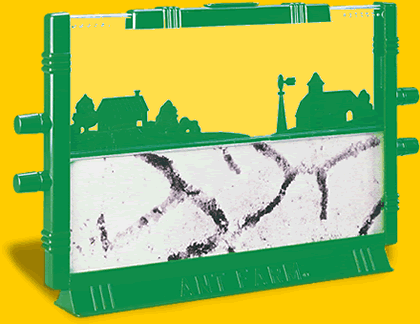
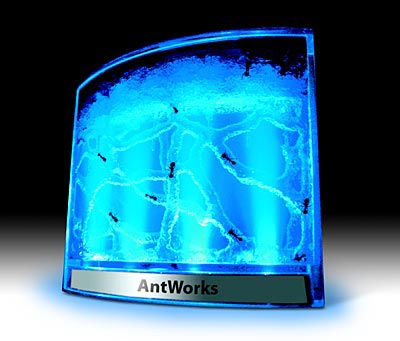
Background
I remember back when I had an ant farm as a kid and it used to be one heck of toy. I think I had an Uncle Milton ant farm, since until recently that was the only type of ant farm kids could buy. Uncle Milton did well for himself - he sold about 20 million of these things, so I am betting that a few other people out there had one too.
There was the flowing green outline of the farm equipment above ground, the exciting tunnels that the ants created, and then of course the surprise and disappointment when it all came crashing down after a few weeks when the ants died. But still, considering you were watching ants behind a piece of plastic, it was one wild ride.
A few years ago NASA helped develop the Space Age Gel Ant Habitat and stirred things up by replacing the ants normal tunneling environment of sand or dirt with a gel that not only serves as their habitat, but that is also their source of food. A friend of mine got one of these and it turned out to be disappointingly small, and after a while the ants went crazy from the gel and began nightly attempts at escaping. The holes at the top of the container were just a little to big and I think that eventually a few of them actually made it out into the free world.
I wanted the core of my ant farm to be built from cheap materials, stylish, and safe (I didn't want the ants to escape under any circumstances. Fear of ants escaping into your room = sleepless nights. Sleepless nights = unstable day time function. Unstable daytime function = reduction in caloric intake, and nobody wants that.)
Ant farm design and construction is pretty flexible. I read a little bit about ants online and learned that they prefer a little bit of privacy, a bit of moisture in their sand and some food to eat. Other than that they pretty much take care of themselves so the design process was left wide open.
I decided to use two old windows to build the base of the ant farm and then add in some customized options as things went along.
Materials
I remember back when I had an ant farm as a kid and it used to be one heck of toy. I think I had an Uncle Milton ant farm, since until recently that was the only type of ant farm kids could buy. Uncle Milton did well for himself - he sold about 20 million of these things, so I am betting that a few other people out there had one too.
There was the flowing green outline of the farm equipment above ground, the exciting tunnels that the ants created, and then of course the surprise and disappointment when it all came crashing down after a few weeks when the ants died. But still, considering you were watching ants behind a piece of plastic, it was one wild ride.
A few years ago NASA helped develop the Space Age Gel Ant Habitat and stirred things up by replacing the ants normal tunneling environment of sand or dirt with a gel that not only serves as their habitat, but that is also their source of food. A friend of mine got one of these and it turned out to be disappointingly small, and after a while the ants went crazy from the gel and began nightly attempts at escaping. The holes at the top of the container were just a little to big and I think that eventually a few of them actually made it out into the free world.
I wanted the core of my ant farm to be built from cheap materials, stylish, and safe (I didn't want the ants to escape under any circumstances. Fear of ants escaping into your room = sleepless nights. Sleepless nights = unstable day time function. Unstable daytime function = reduction in caloric intake, and nobody wants that.)
Ant farm design and construction is pretty flexible. I read a little bit about ants online and learned that they prefer a little bit of privacy, a bit of moisture in their sand and some food to eat. Other than that they pretty much take care of themselves so the design process was left wide open.
I decided to use two old windows to build the base of the ant farm and then add in some customized options as things went along.
Materials
- two matching windows
- wood or metal lid
- window screening
- 40 lbs. children's play box sand
- adhesive foam weather stripping
- hardware - bolts, washers and wing nuts
- water bottle w/cotton
- ant food
- laser etched curtains and curtain rod
- LED ground cherry husk lamp with appropriate resistor and power supply
- ceramic letters
- laser cut ant stencils
- magnetic lid
Window Treatment Part 1
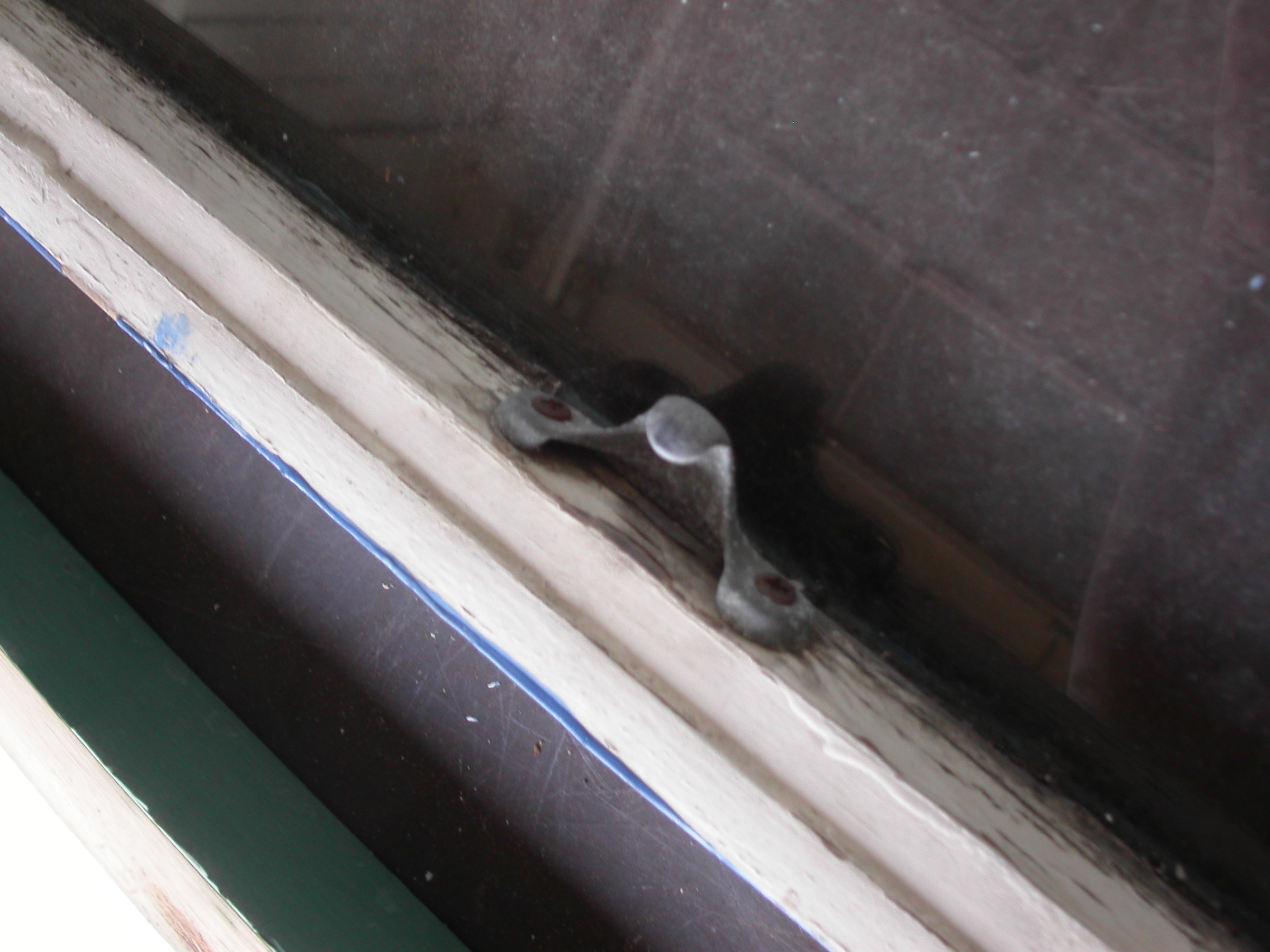
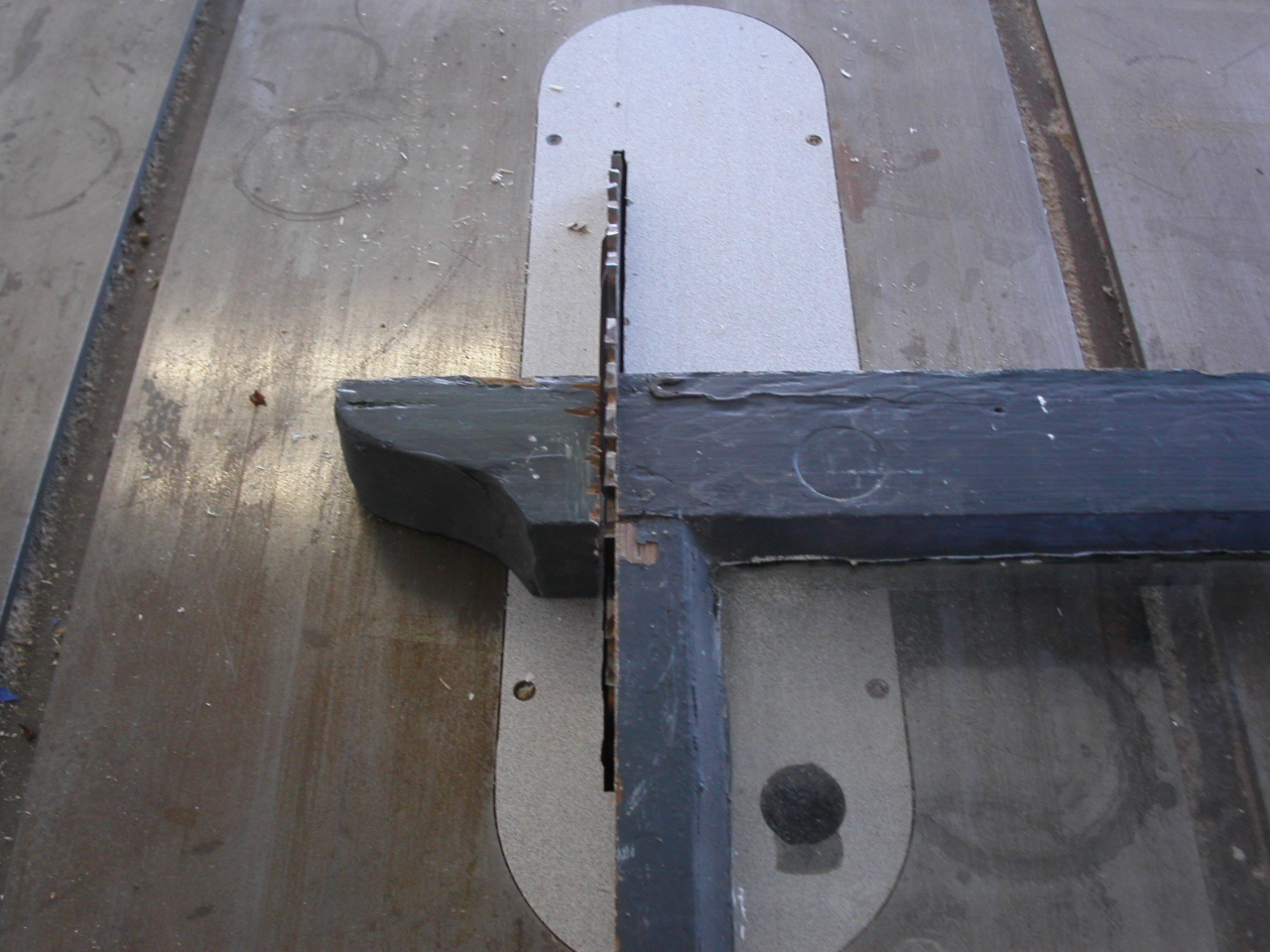
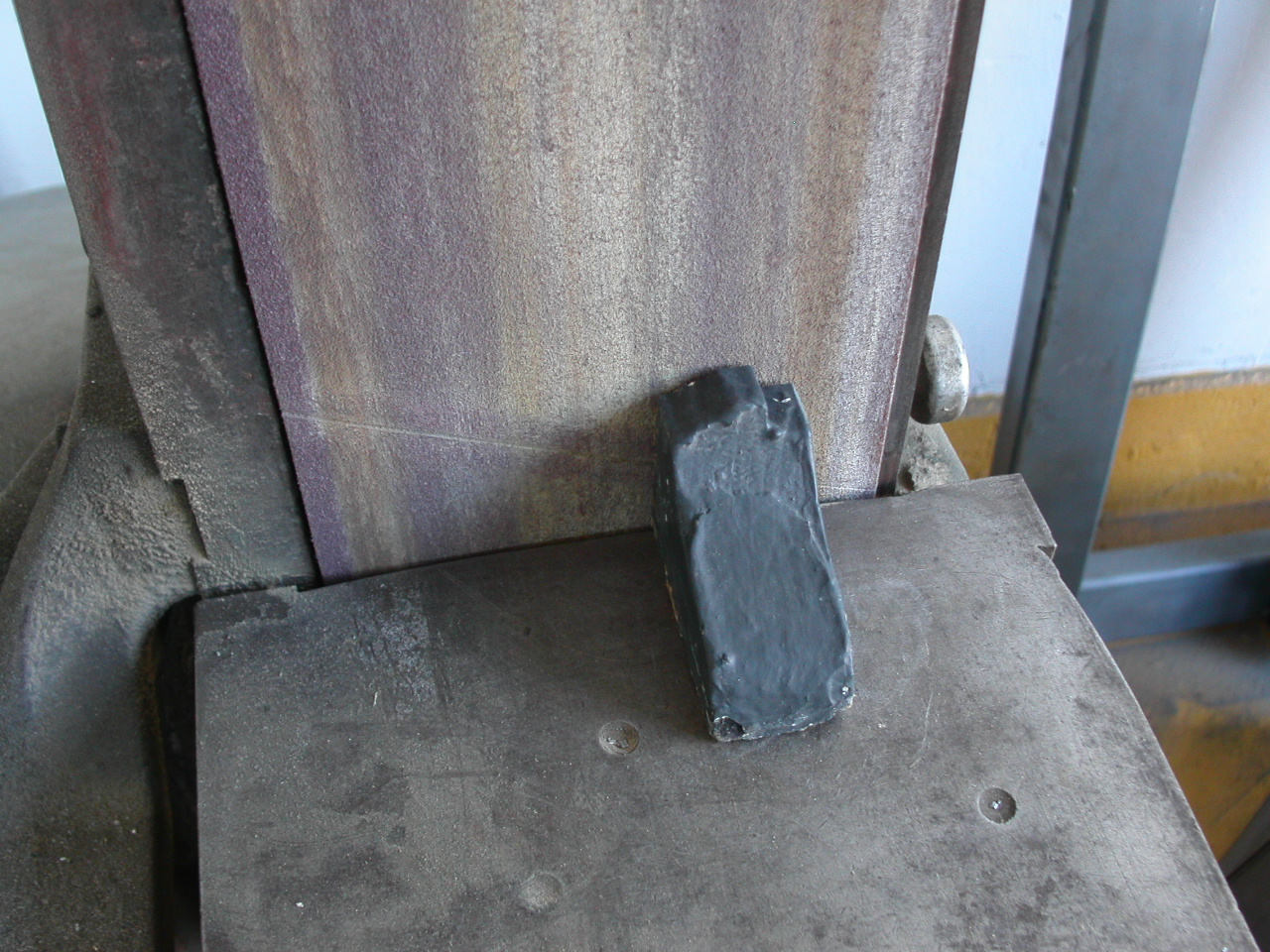
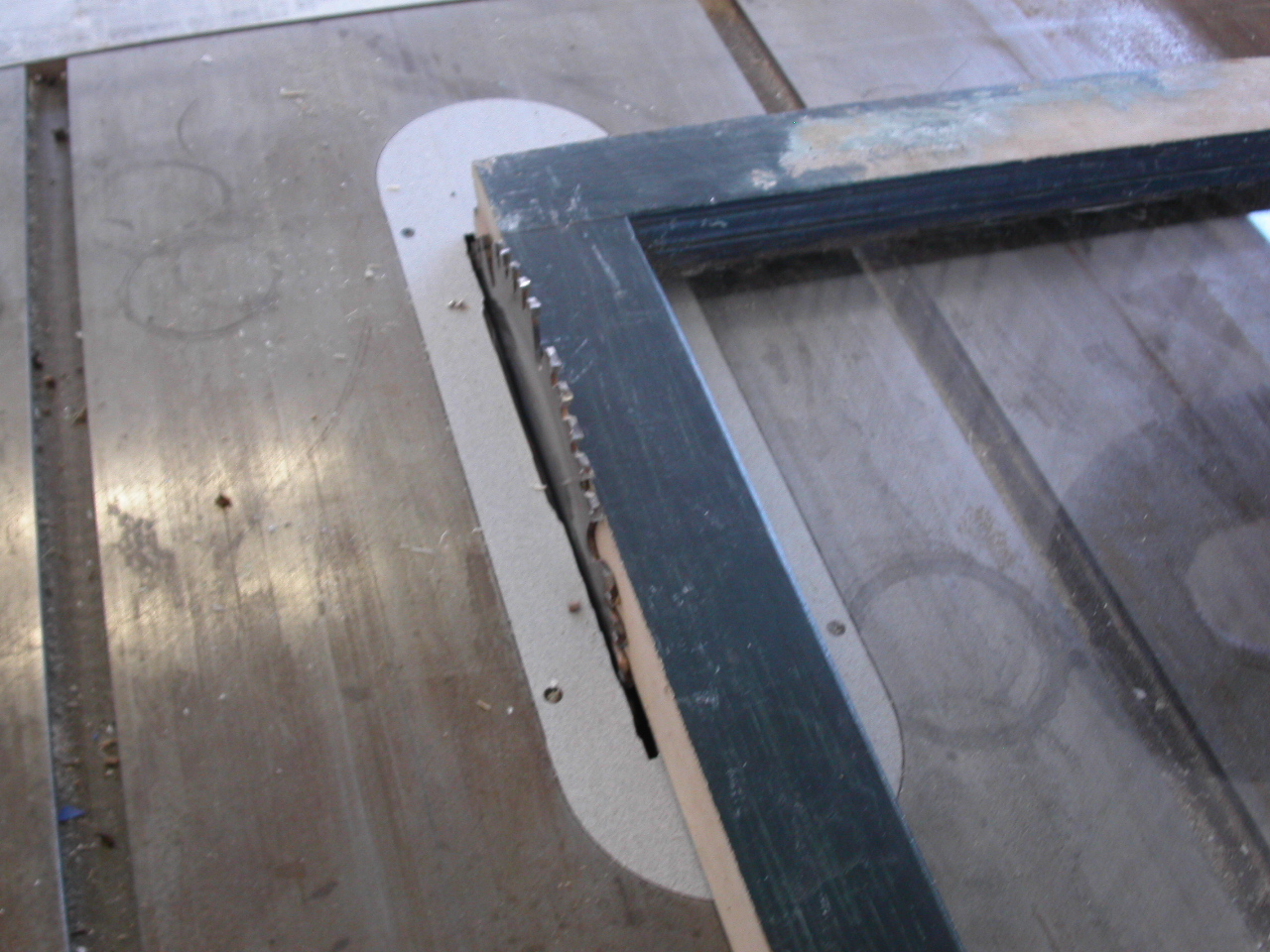
If you live in a neighborhood that has lots of old houses it's easy to find old windows on the street. Usually people just throw them away when they get new windows put in in place of old ones. I needed two windows that were exactly the same size though for the ant farm so I headed over to Urban Ore in Berkeley, CA. If you haven't been there and you live in the area I highly recommend it. Their prices for somethings are totally overinflated, but sometimes you can walk away with a good deal.
I picked up a few different windows that were about 30" wide by 19" tall just in case I broke one (which I did during the building process - so don't be alarmed if you see some inconsistency in the pictures).
The first step was to remove all of the hardware on the windows. Look for lock catches at the top of the window and counter weights in the side channels.
Then I took the windows over the table saw and cut off the little decorative tabs that were on the bottoms of the windows. I needed my window to sit flat on a surface and I thought the little nubs that were sticking out of the bottom would make nice stabilizing feet for the completed ant farm. I put them aside for later.
I trimmed the windows all to the same size and sanded the feet flat on a stationary belt sander.
You can do all of these steps with hand tools and it will be totally fine. Nothing I did required the precision of the stationary tools in the Squid Labs' workshop, but since they were available, I used them.
Remember to take all appropriate safety precautions when using power tools. I cut through a nail that was used to construct the window while I was trimming it on the table saw and I was glad that I was wearing safety glasses!
I picked up a few different windows that were about 30" wide by 19" tall just in case I broke one (which I did during the building process - so don't be alarmed if you see some inconsistency in the pictures).
The first step was to remove all of the hardware on the windows. Look for lock catches at the top of the window and counter weights in the side channels.
Then I took the windows over the table saw and cut off the little decorative tabs that were on the bottoms of the windows. I needed my window to sit flat on a surface and I thought the little nubs that were sticking out of the bottom would make nice stabilizing feet for the completed ant farm. I put them aside for later.
I trimmed the windows all to the same size and sanded the feet flat on a stationary belt sander.
You can do all of these steps with hand tools and it will be totally fine. Nothing I did required the precision of the stationary tools in the Squid Labs' workshop, but since they were available, I used them.
Remember to take all appropriate safety precautions when using power tools. I cut through a nail that was used to construct the window while I was trimming it on the table saw and I was glad that I was wearing safety glasses!
Window Treatment Part 2
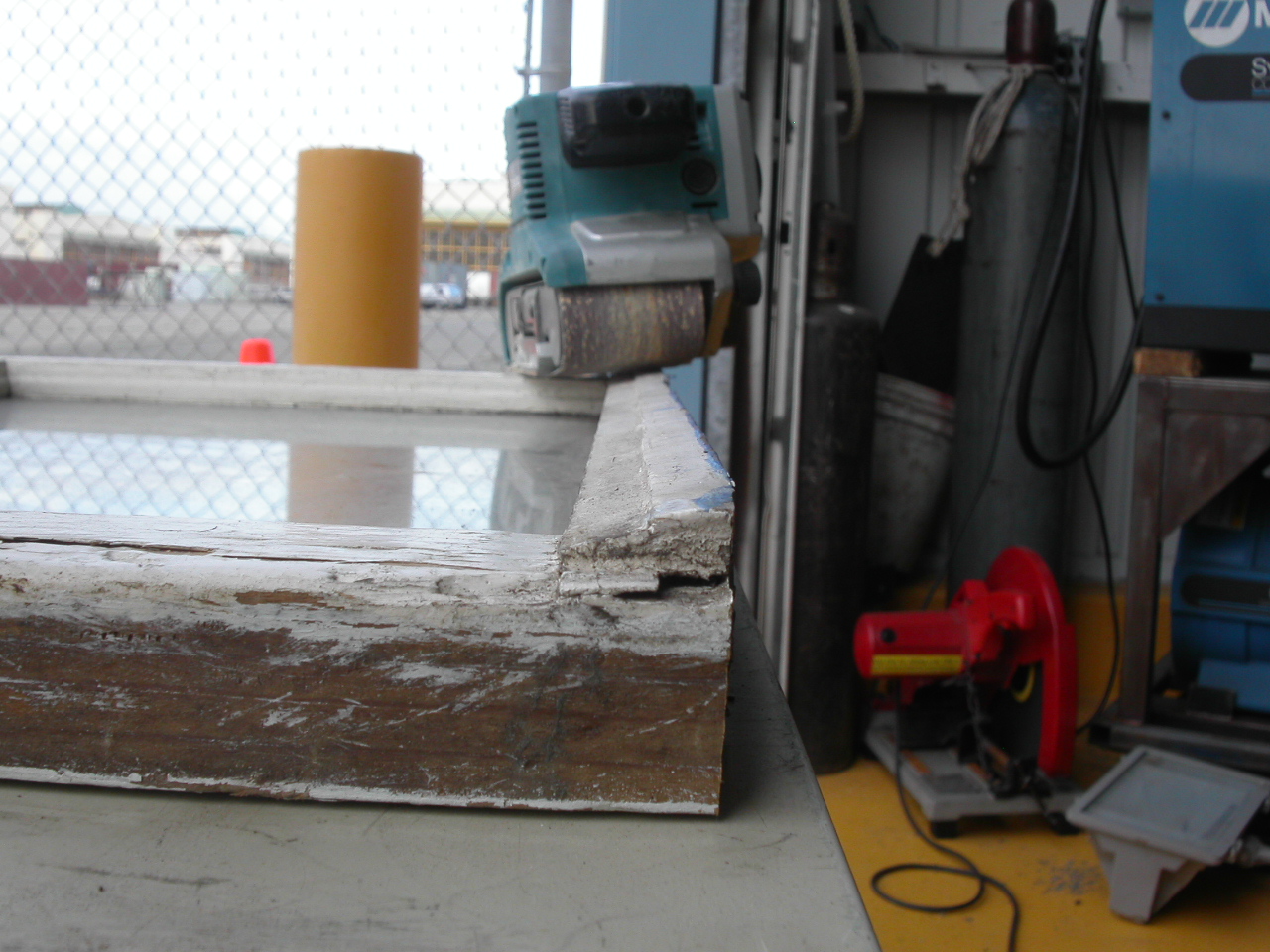
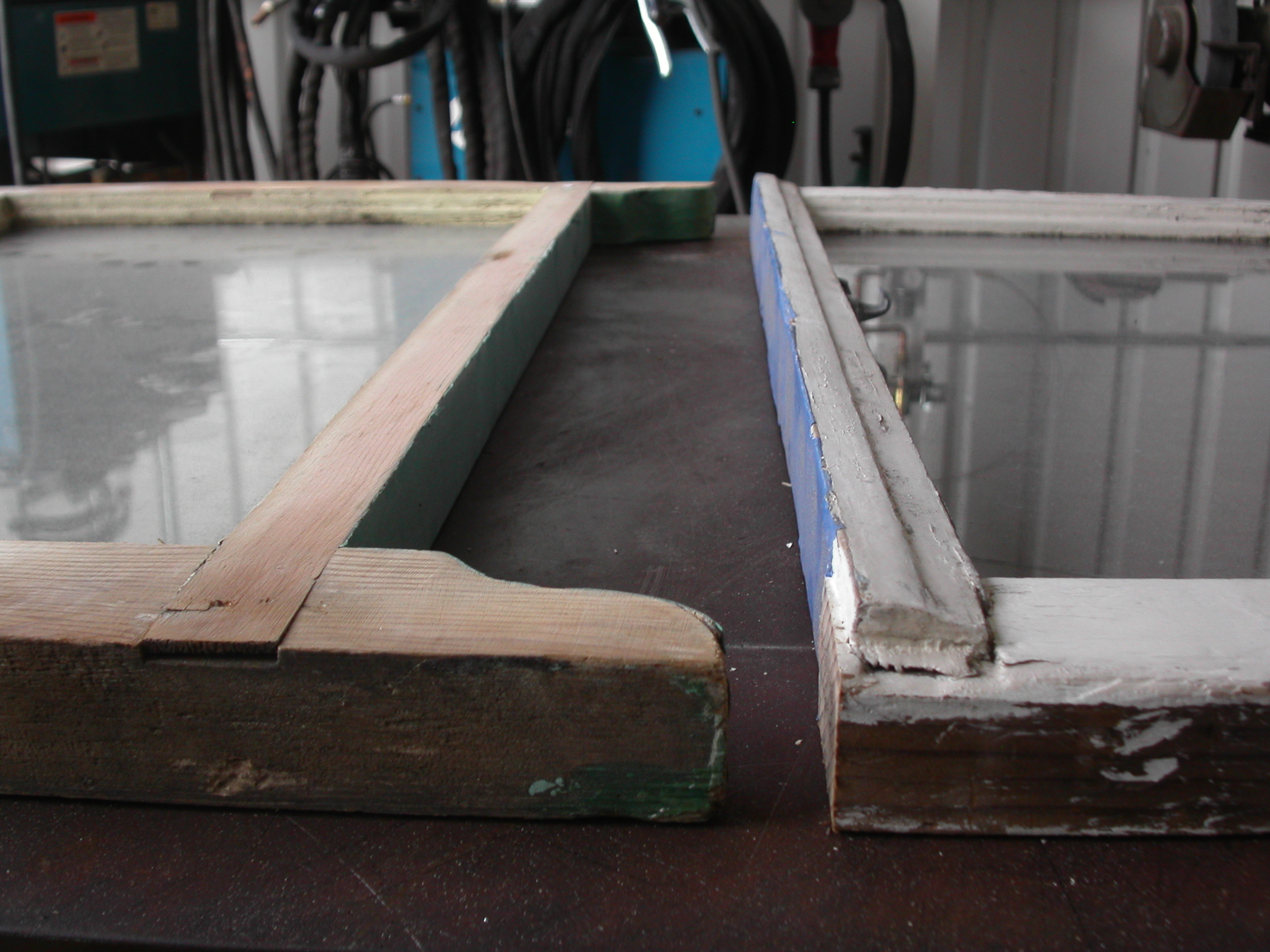
Next the windows needed to be made flat so that they would fit together tightly when they were sandwiched together to form the ant farm. The windows had a 1/4" piece of molding on them that I sanded off using a belt sander.
**Safety Warning**
It is very likely that these windows came from a house that was old enough to have been painted with lead paint. If you are using old windows and are going to be sanding the paint be sure to use a respirator, goggles, and collect as much of the dust that is created. It's not the end of the world to sand through lead paint, you just have to be sure to handle it properly, avoid breathing in the dust and be sure to wash the dust out of your clothes, hair and off your skin before you do anything else once your done working.
Sand off any other bumps or paint globs that will prevent the windows from meeting when they get put together.
Make a Cutout at the Top of the Windows
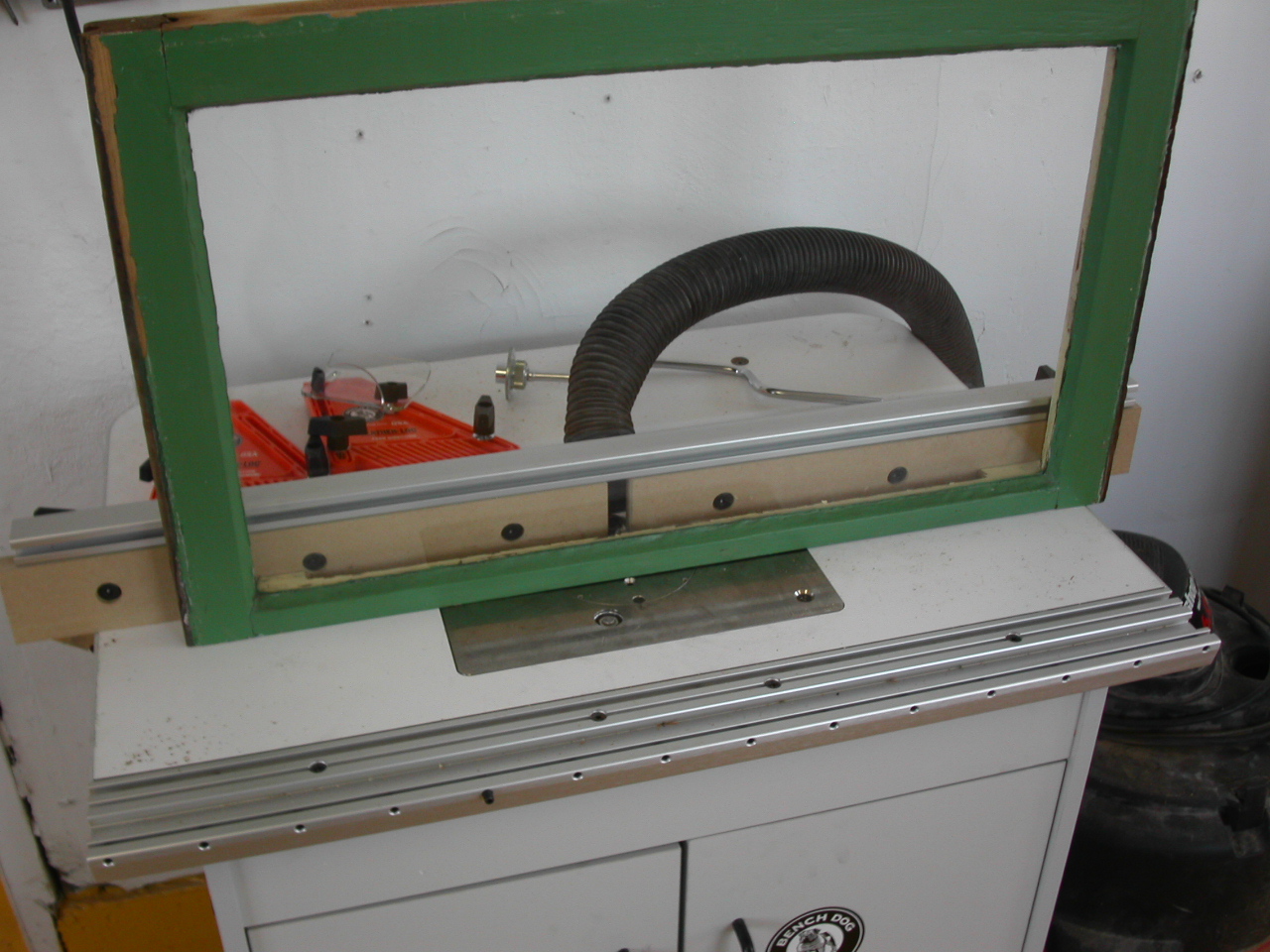
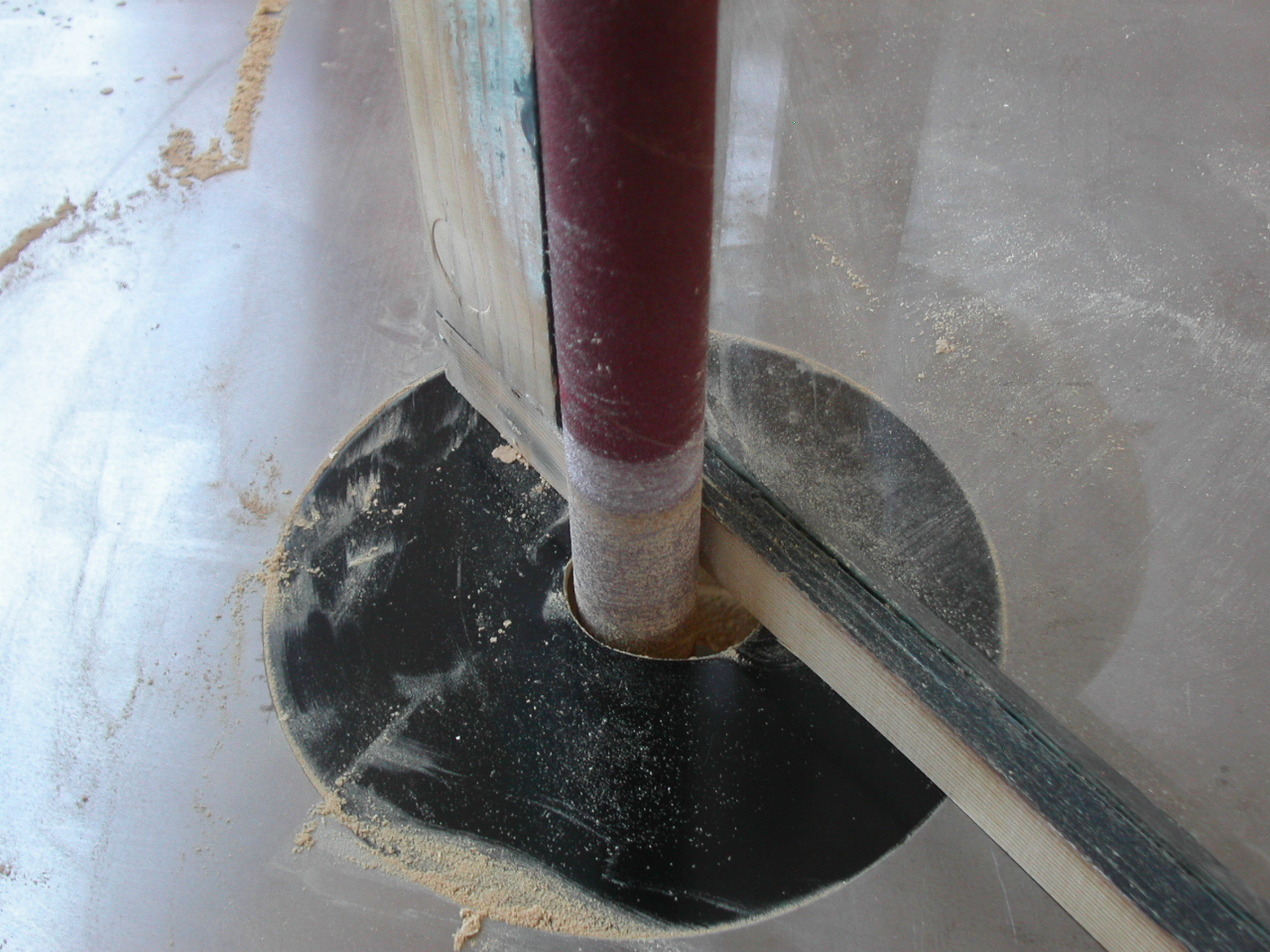
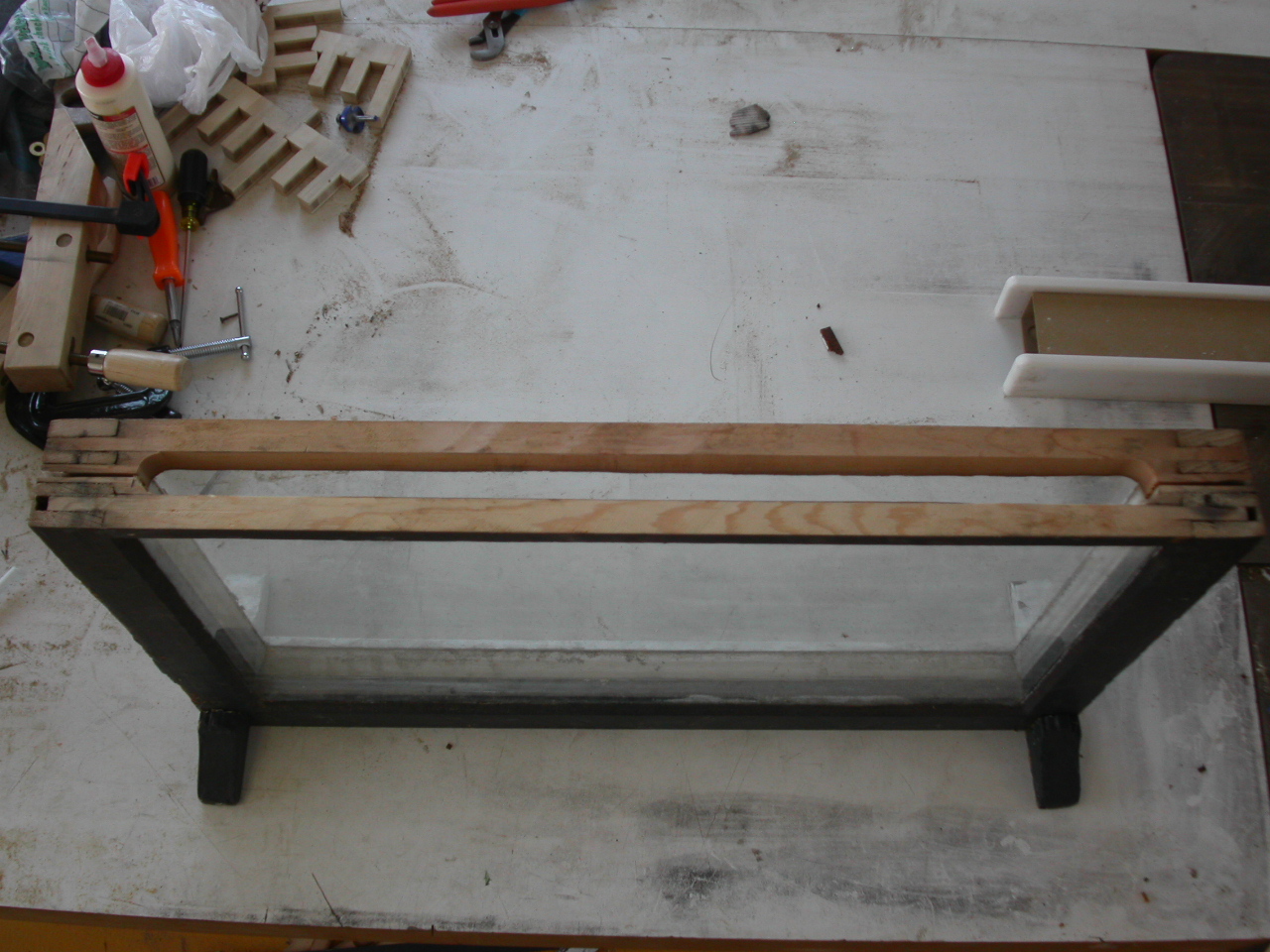
Once you decide which way you want the window to go (I put the fat end of mine at the bottom) the next step is to make a cutout in the top of the window. The cutout lets you feed get inside the ant farm while it's filled with sand so that you can preform some ant maintenance like replace their water and drop in food.
I used a combination of a router, a jig saw and spindle sander to do this.
I ran the top piece of the window past a straight bit on a router to cut a groove in the piece of wood. I then made increasingly deeper passes on the router until I notched away enough material where I could just go in with the spindle sander and clean things up. A small drum in the spindle sander makes really nice curves at the end of the cutout.
I repeated this process on the other window (creating half of an oval in each) so that when I put them together I would have one complete cutout.
You can use a jig saw to make a cutout in the top piece of the window just like the one I made with a router. Just make sure you clamp the window to a stable surface before you start making your cut. Draw a line with a straight edge so that you have something to guide you.
I found that the jig saw was by far the easiest and the fastest way to make the cutout.
I used a combination of a router, a jig saw and spindle sander to do this.
I ran the top piece of the window past a straight bit on a router to cut a groove in the piece of wood. I then made increasingly deeper passes on the router until I notched away enough material where I could just go in with the spindle sander and clean things up. A small drum in the spindle sander makes really nice curves at the end of the cutout.
I repeated this process on the other window (creating half of an oval in each) so that when I put them together I would have one complete cutout.
You can use a jig saw to make a cutout in the top piece of the window just like the one I made with a router. Just make sure you clamp the window to a stable surface before you start making your cut. Draw a line with a straight edge so that you have something to guide you.
I found that the jig saw was by far the easiest and the fastest way to make the cutout.
Hardware to Hold the Windows Together
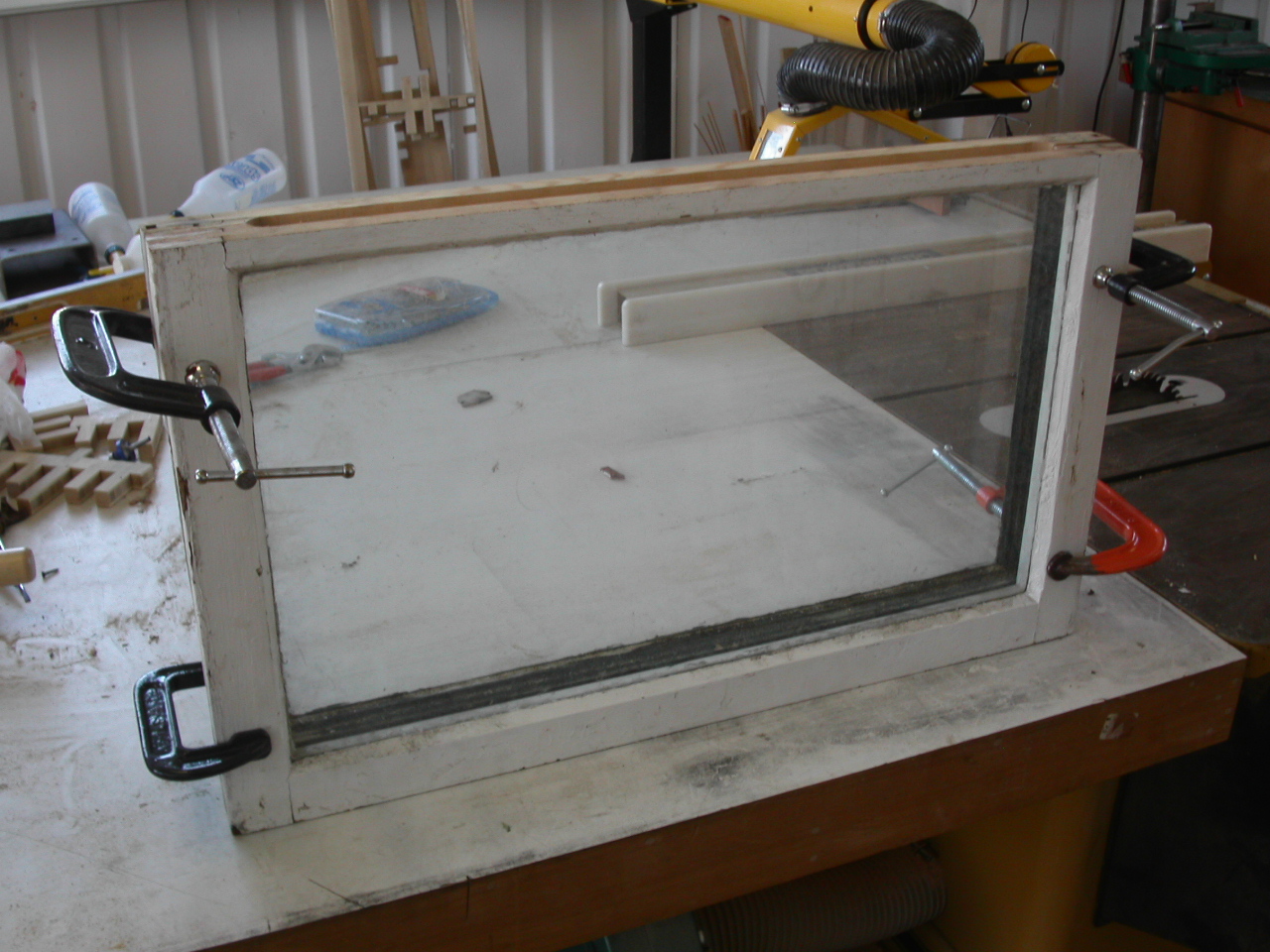
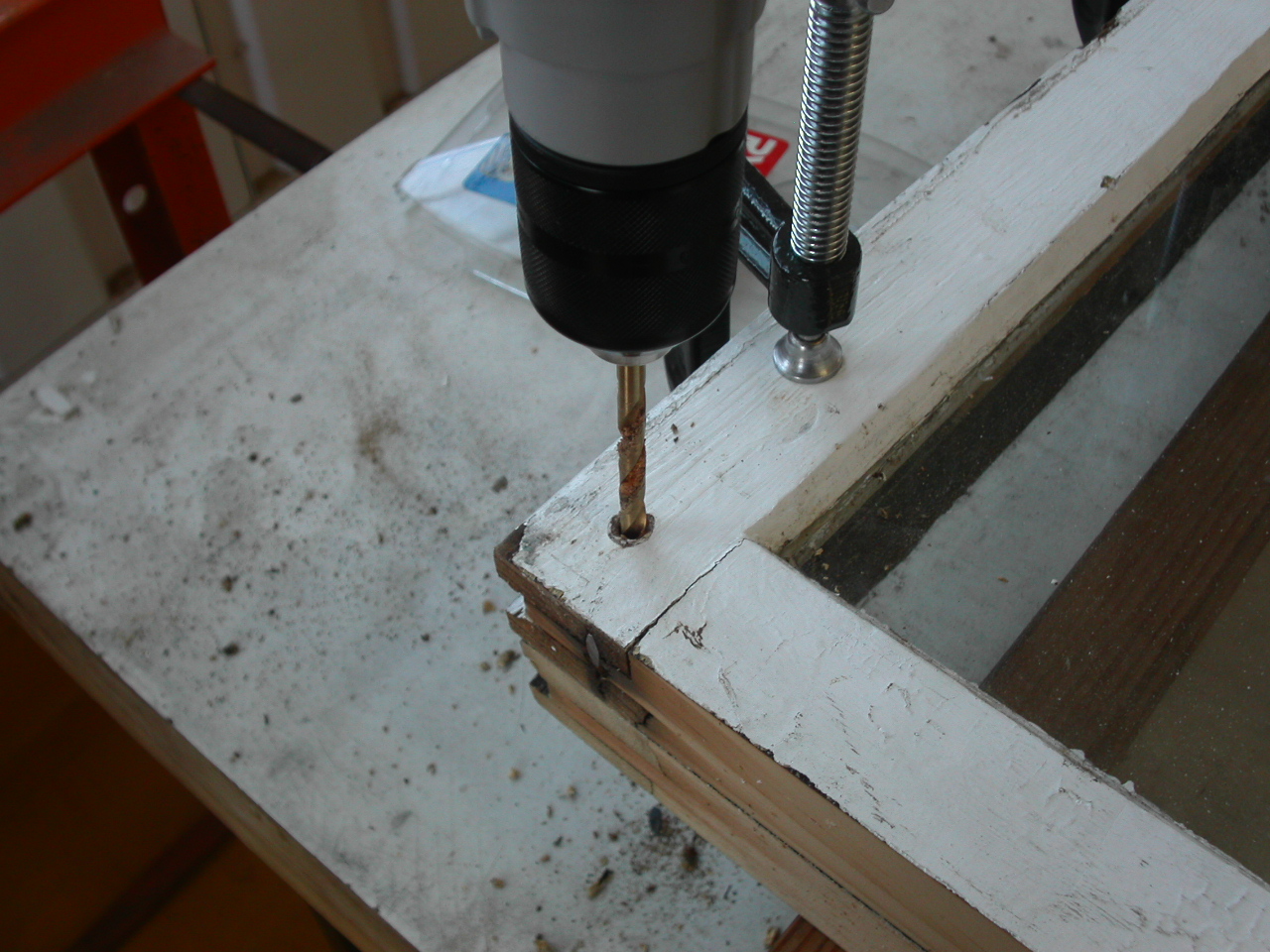
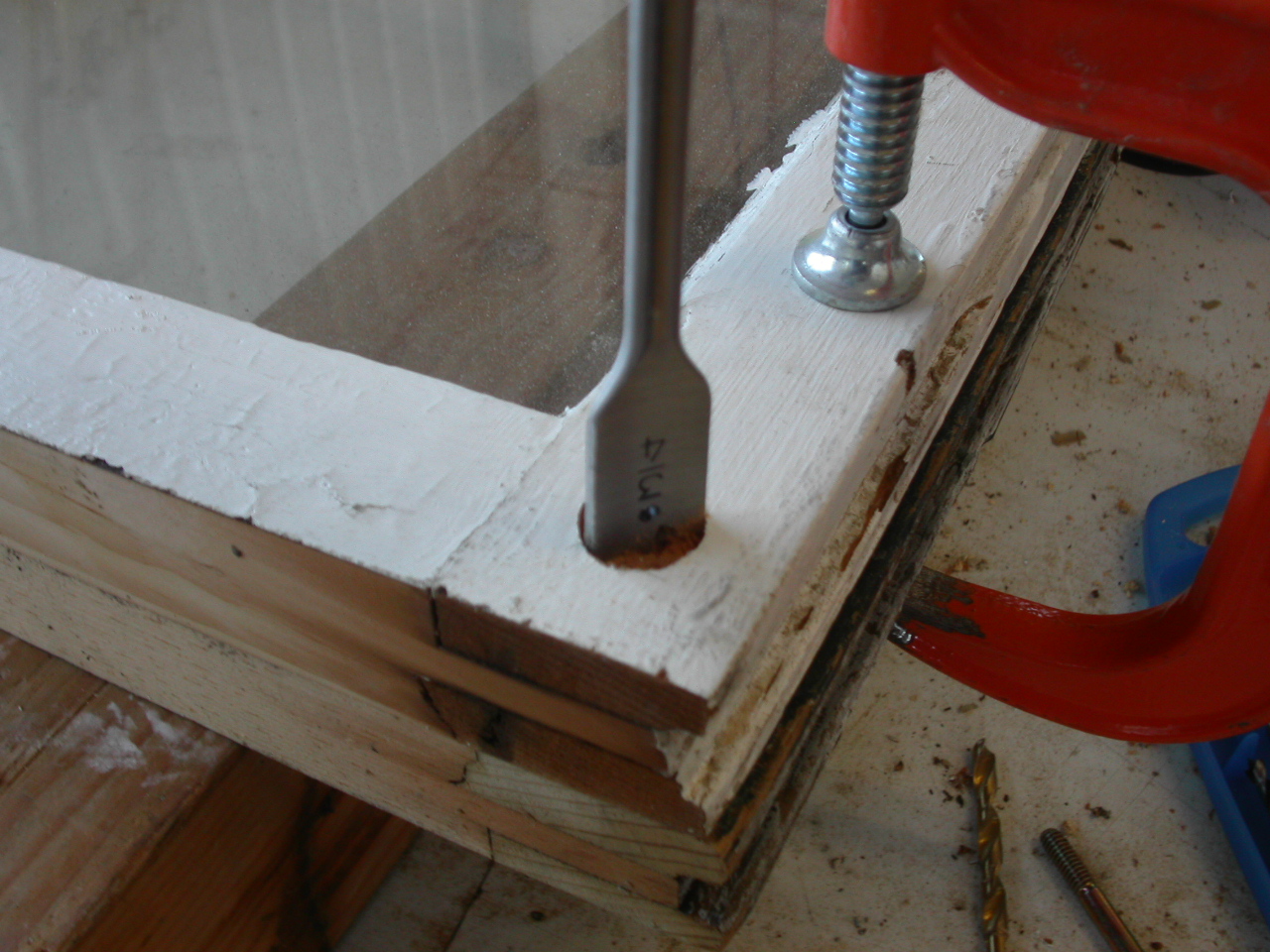
Once the windows were sanded smooth and the cutout was in place it was time to drill some holes to fit the hardware that would connect the two windows.
I bought 3.5" brass bolts, washers and wing nuts to connect the two windows together. The brass looks nice and the wing nuts allow the ant farm to be assembled by hand without the need for any tools.
First I clamped the windows together so that my holes would line up, and then I drilled holes through both windows where I wanted the bolts to go.
I then put a spade bit into the drill and drilled out the countersinks for my washers.
I bought 3.5" brass bolts, washers and wing nuts to connect the two windows together. The brass looks nice and the wing nuts allow the ant farm to be assembled by hand without the need for any tools.
First I clamped the windows together so that my holes would line up, and then I drilled holes through both windows where I wanted the bolts to go.
I then put a spade bit into the drill and drilled out the countersinks for my washers.
Prep and Paint
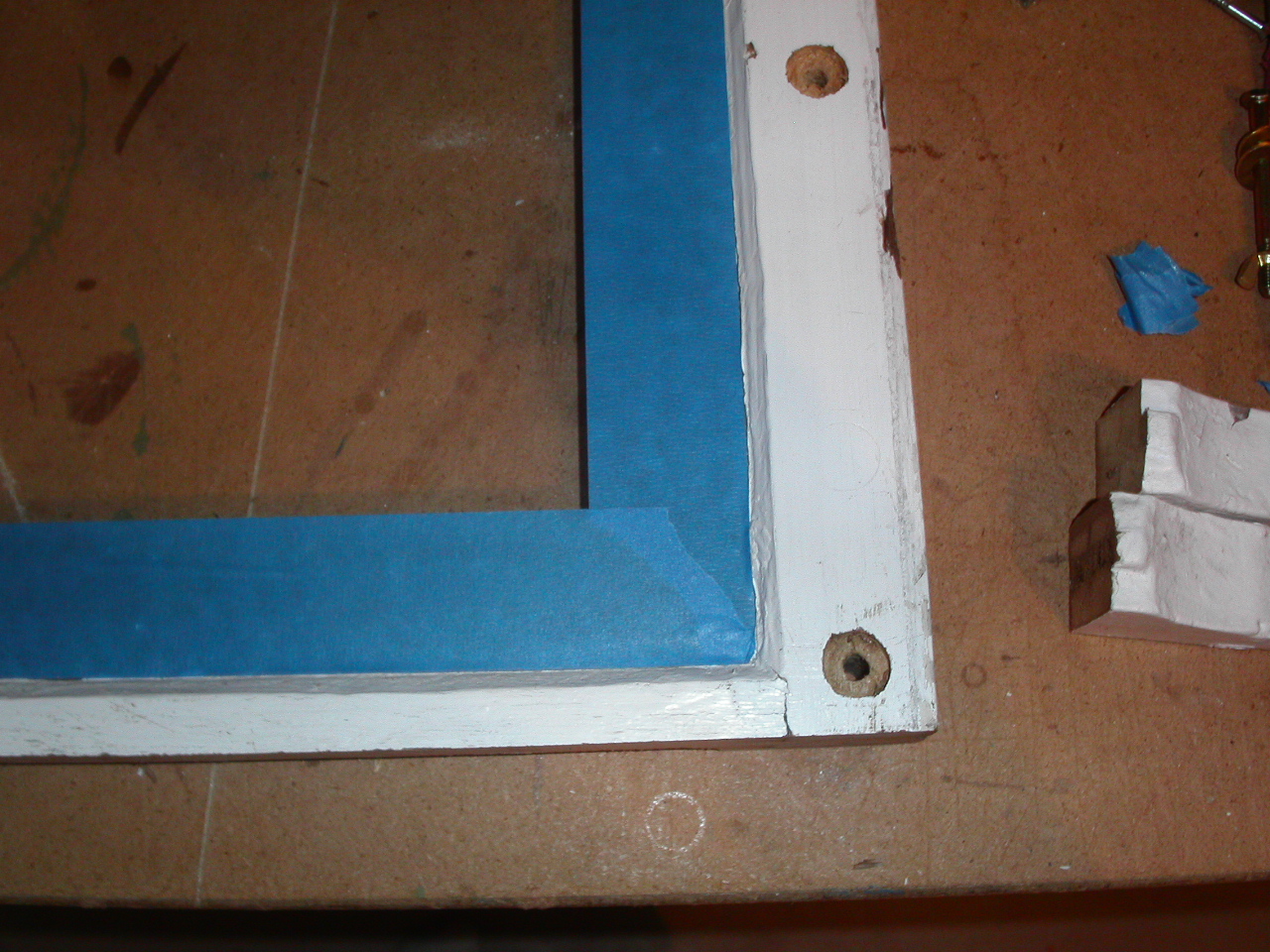
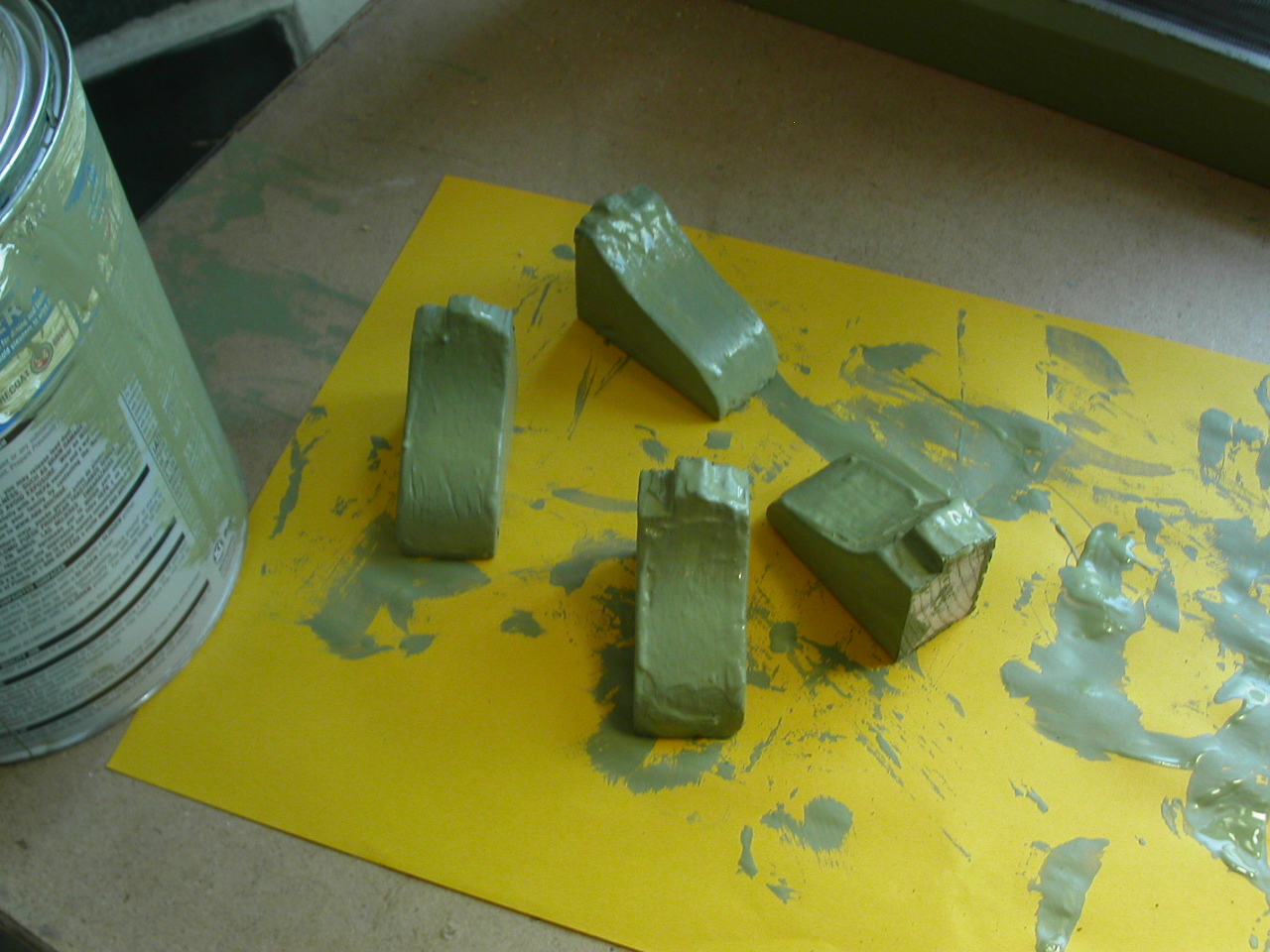
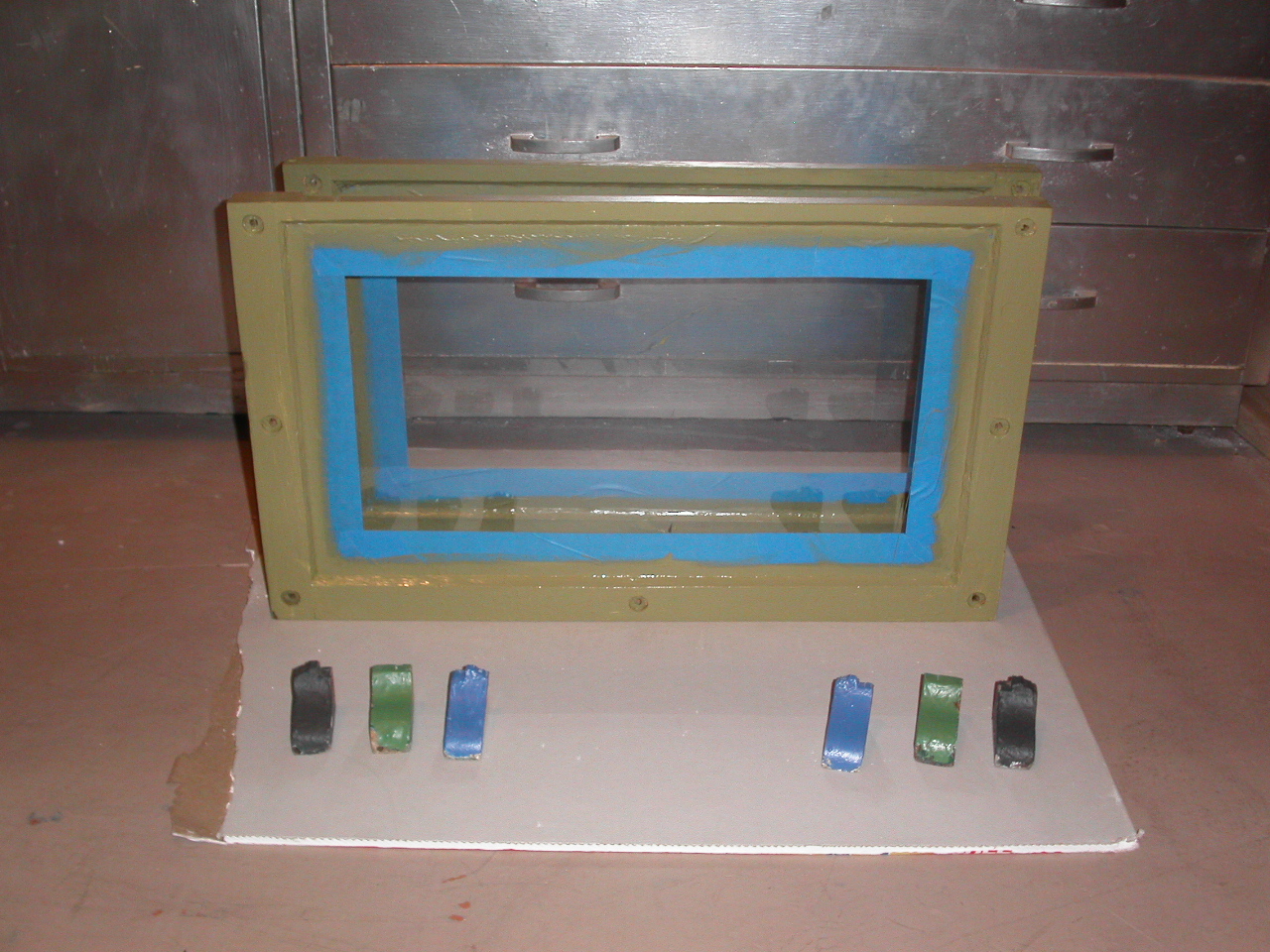
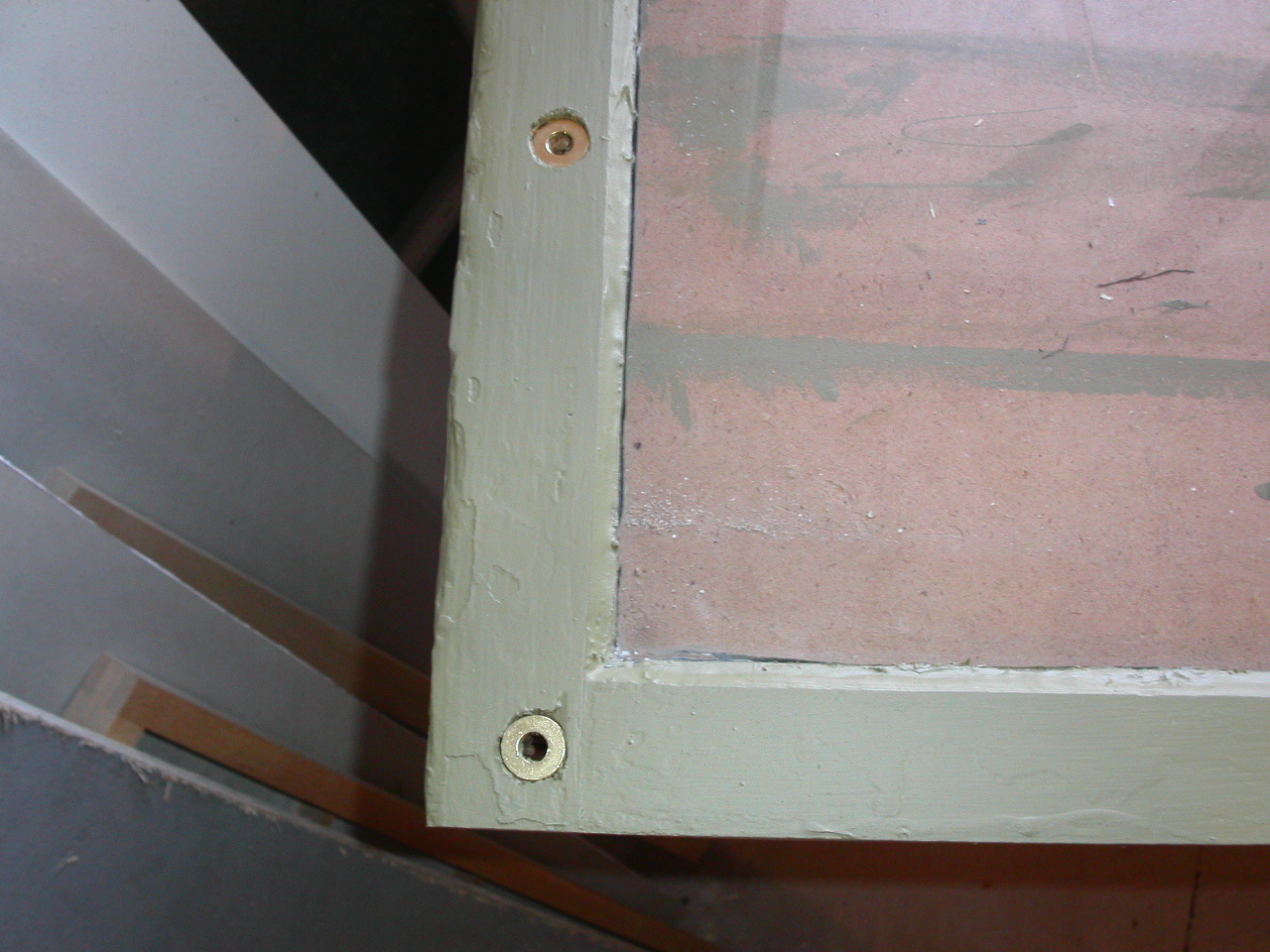
With most of the woodworking complete it was time to paint the windows.
I taped off the glass with painters tape, scrounged up some "vintage green" paint I had left over from painting a wall in my bedroom, and went to town on the thing.
Two coats later it was starting to look pretty snazzy.
I taped off the glass with painters tape, scrounged up some "vintage green" paint I had left over from painting a wall in my bedroom, and went to town on the thing.
Two coats later it was starting to look pretty snazzy.
Install the Hardware
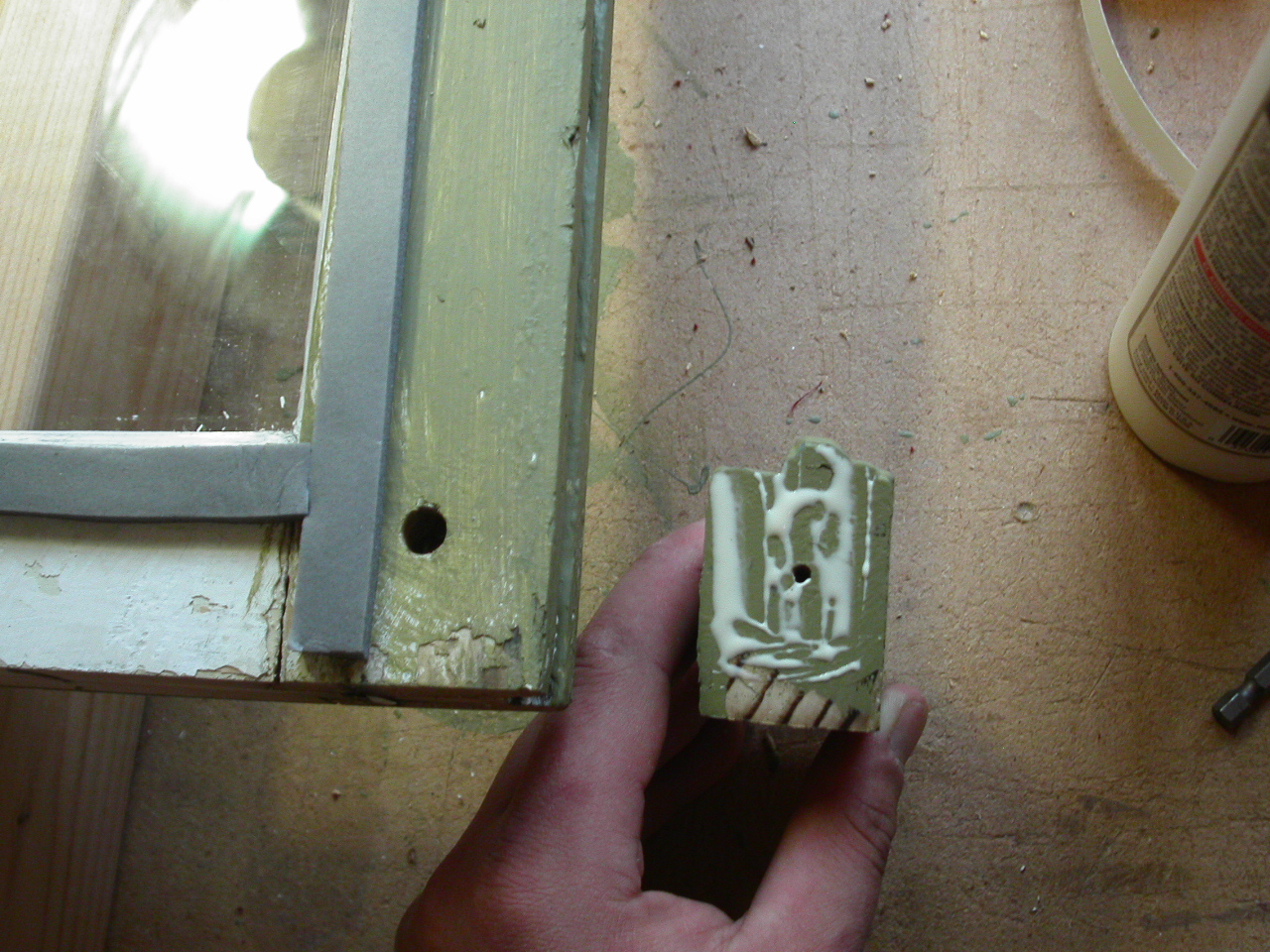
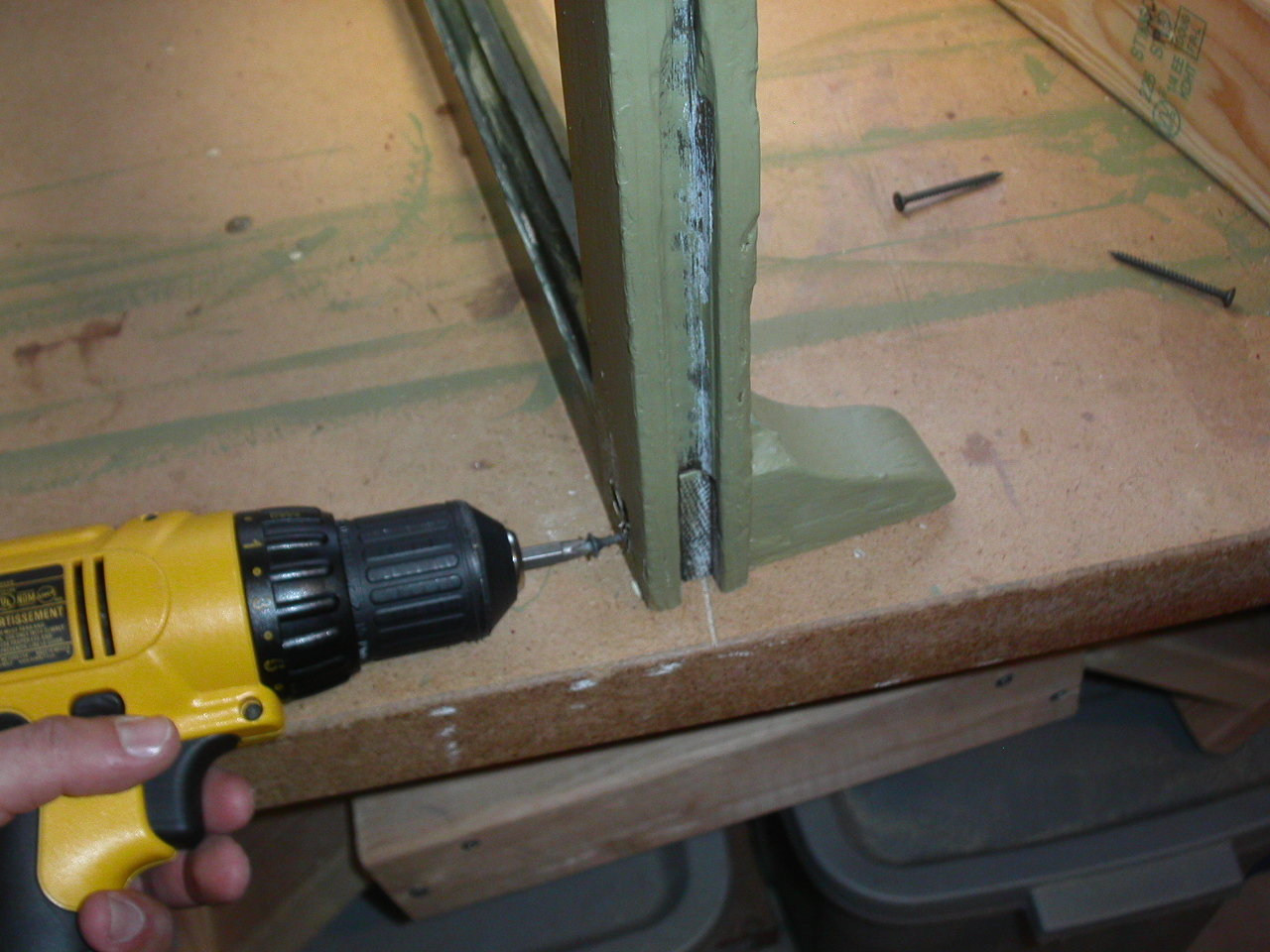
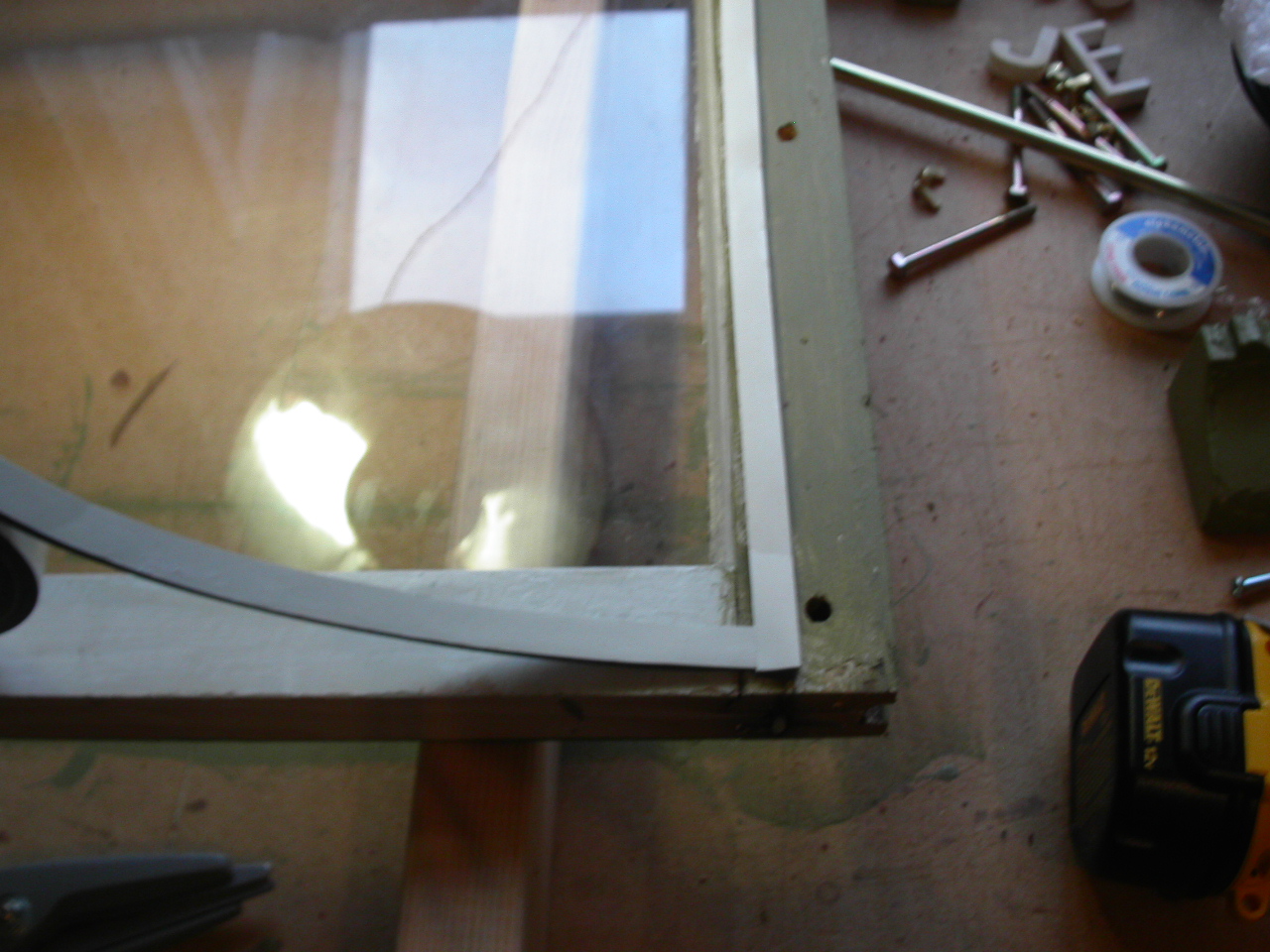
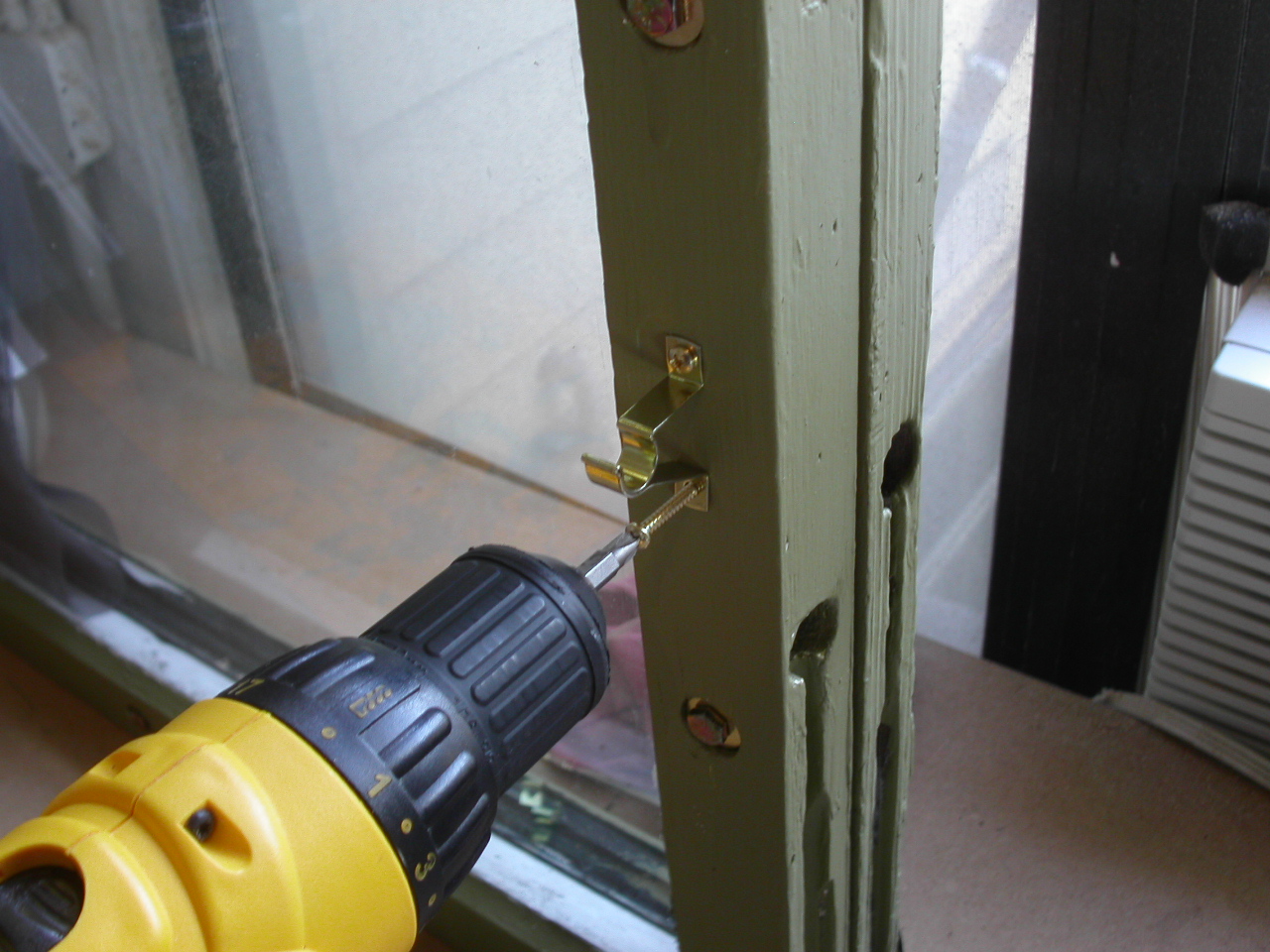
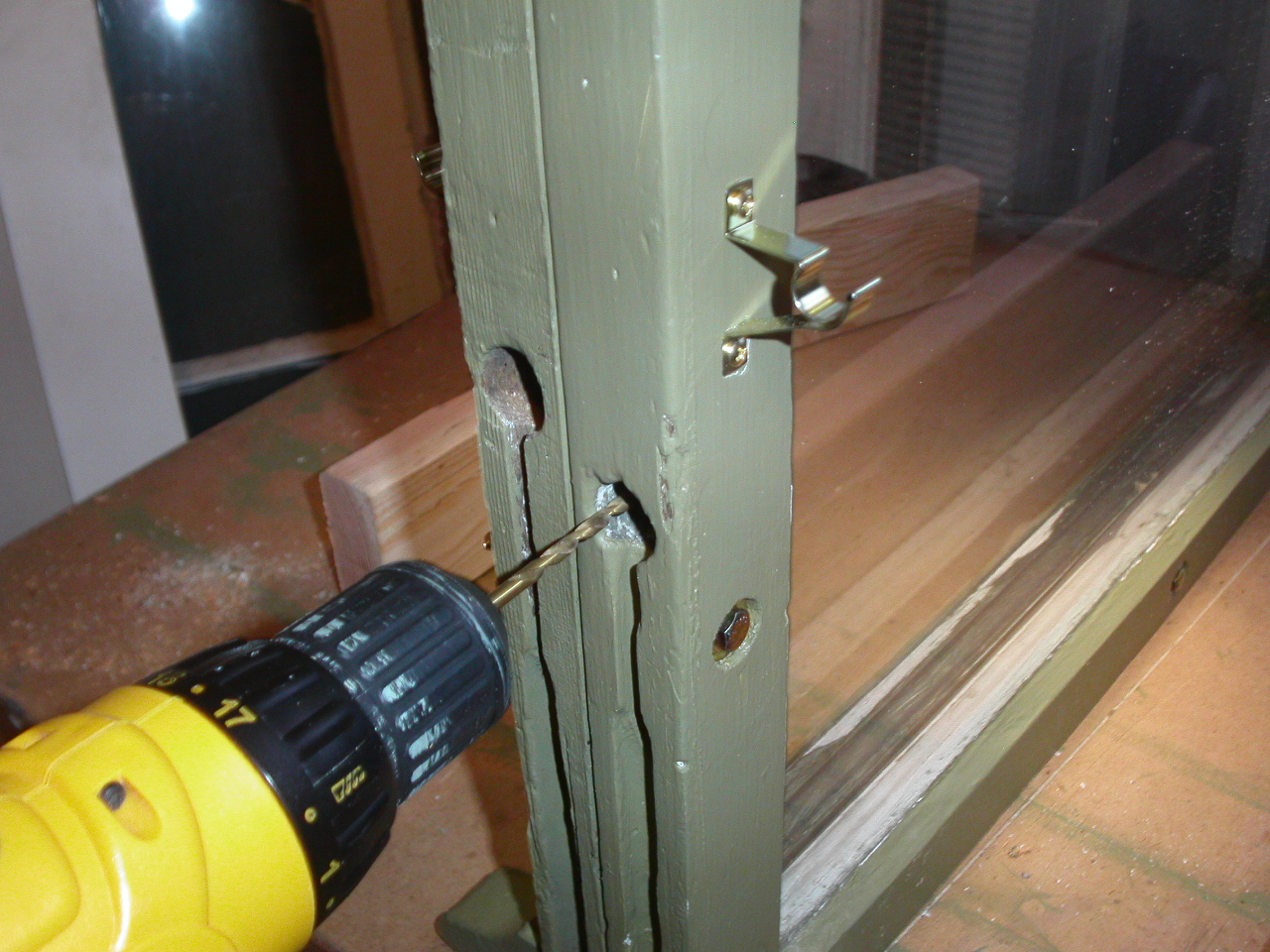
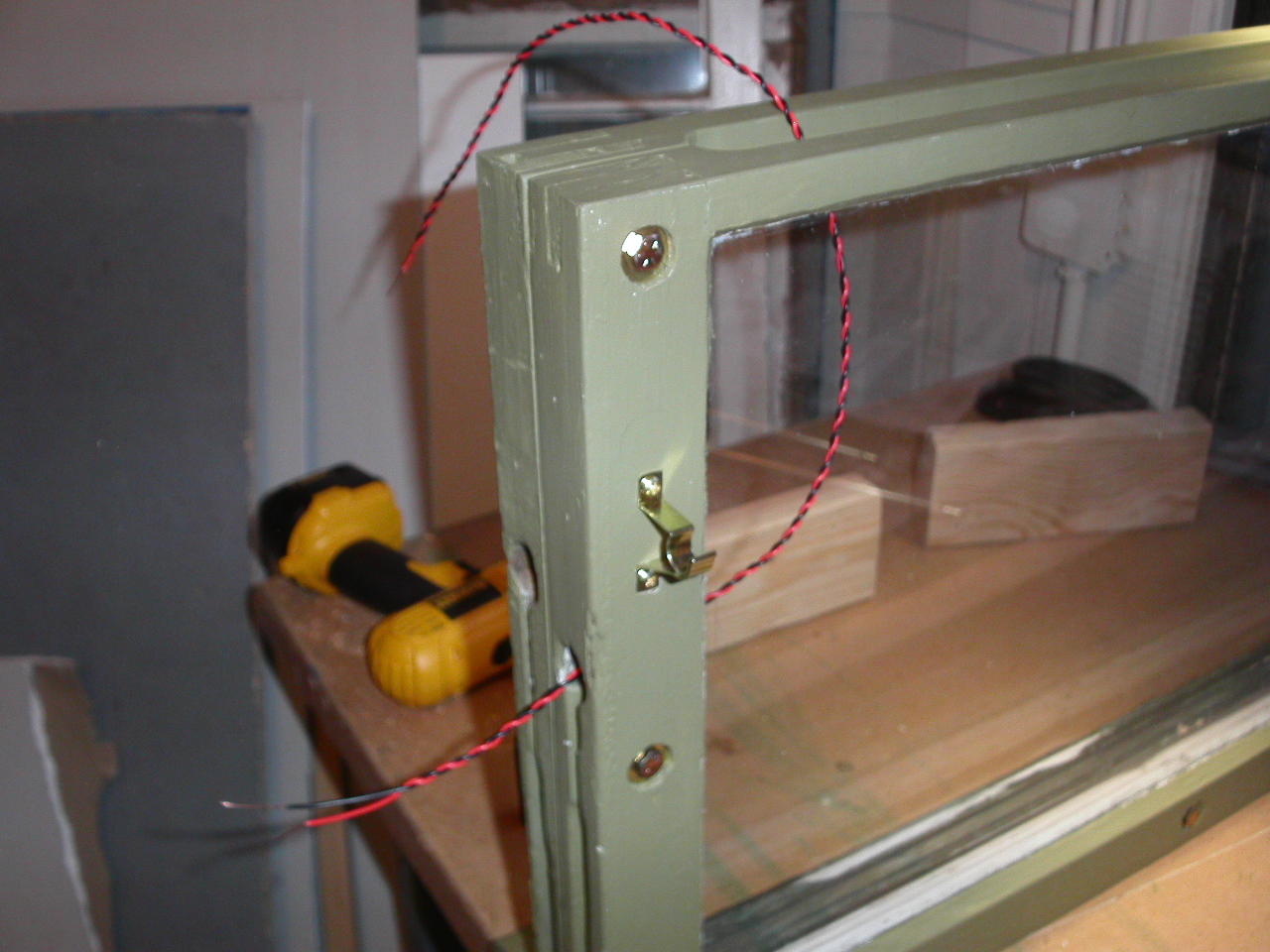
Once the paint was dry it was time to install some of the hardware.
I first attached the feet to the bottom of the windows. I took the nubs that I had cut off earlier, turned them around, and glued them into position on each of the windows. I put a screw through the back of the window into the feet to hold them in place as the glue dried.
Then I put some adhesive foam stripping all around one of the windows to make a seal to keep the sand held into place when I joined the two windows together. They were already fitting together pretty tightly, but I just wanted to be sure that sand wouldn't leak out.
Aside from adding on the hardware and building a lid for the ant farm, I could have been done with the project at this point. The ant farm was basically just two windows sandwiched together with a hole on the top and some feet to keep it upright. But, I wanted to make more than just a simple ant farm, so I kept going.
I wanted to give my ant farm curtains and a light of some kind to both illuminate what was going on inside the ant farm and give the ants an artificial sun to enjoy. I went out and bought some velvet and two cheap brass curtain rods at the fabric store. I also braided some wire together to power the light that would go inside the ant farm.
I then screwed the hooks that hold the curtain rod in place onto the window and drilled a small hole in the side of one of the windows and passed my wire through to the inside.
I first attached the feet to the bottom of the windows. I took the nubs that I had cut off earlier, turned them around, and glued them into position on each of the windows. I put a screw through the back of the window into the feet to hold them in place as the glue dried.
Then I put some adhesive foam stripping all around one of the windows to make a seal to keep the sand held into place when I joined the two windows together. They were already fitting together pretty tightly, but I just wanted to be sure that sand wouldn't leak out.
Aside from adding on the hardware and building a lid for the ant farm, I could have been done with the project at this point. The ant farm was basically just two windows sandwiched together with a hole on the top and some feet to keep it upright. But, I wanted to make more than just a simple ant farm, so I kept going.
I wanted to give my ant farm curtains and a light of some kind to both illuminate what was going on inside the ant farm and give the ants an artificial sun to enjoy. I went out and bought some velvet and two cheap brass curtain rods at the fabric store. I also braided some wire together to power the light that would go inside the ant farm.
I then screwed the hooks that hold the curtain rod in place onto the window and drilled a small hole in the side of one of the windows and passed my wire through to the inside.
Ground Cherry Husk Light
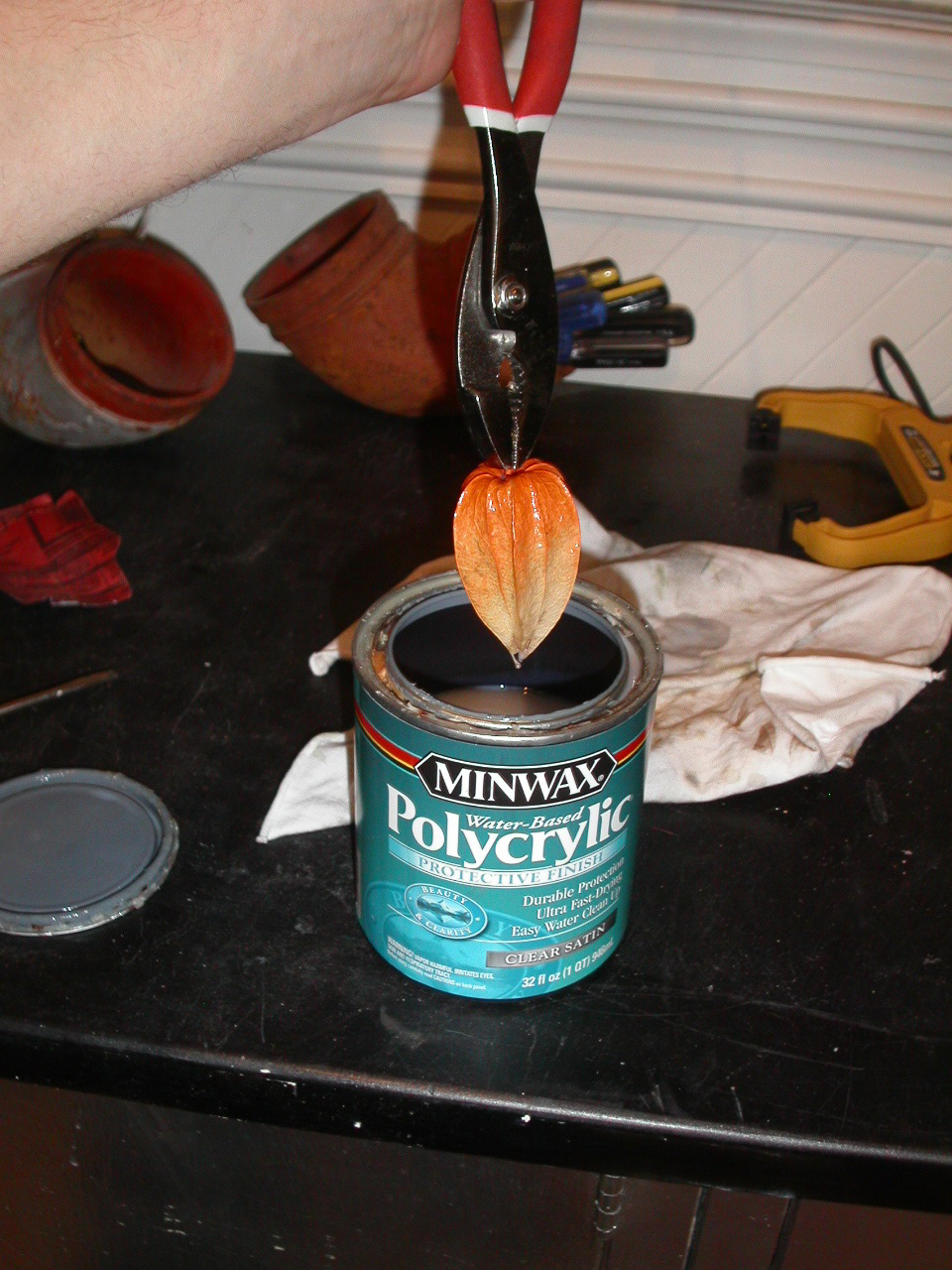
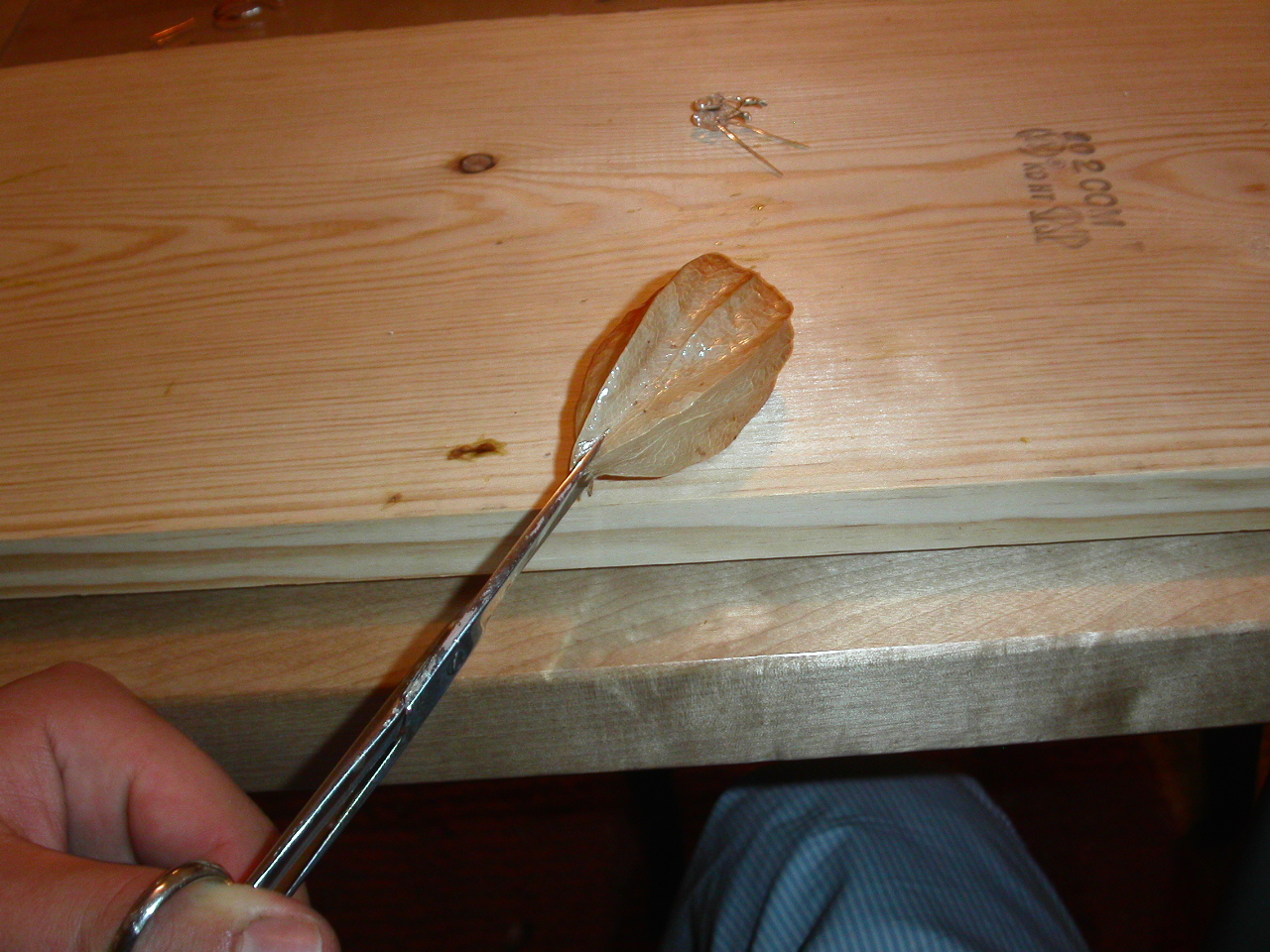
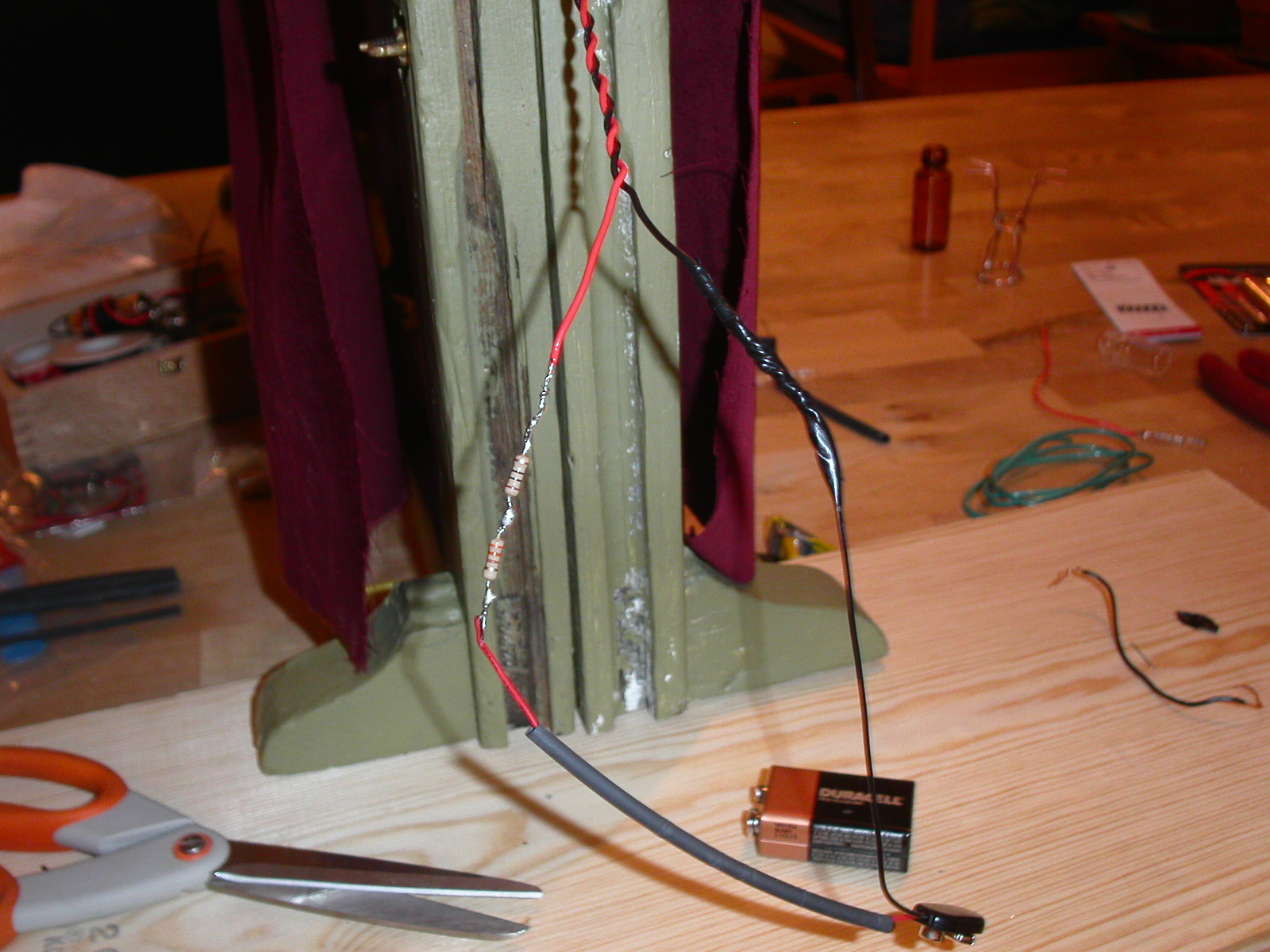

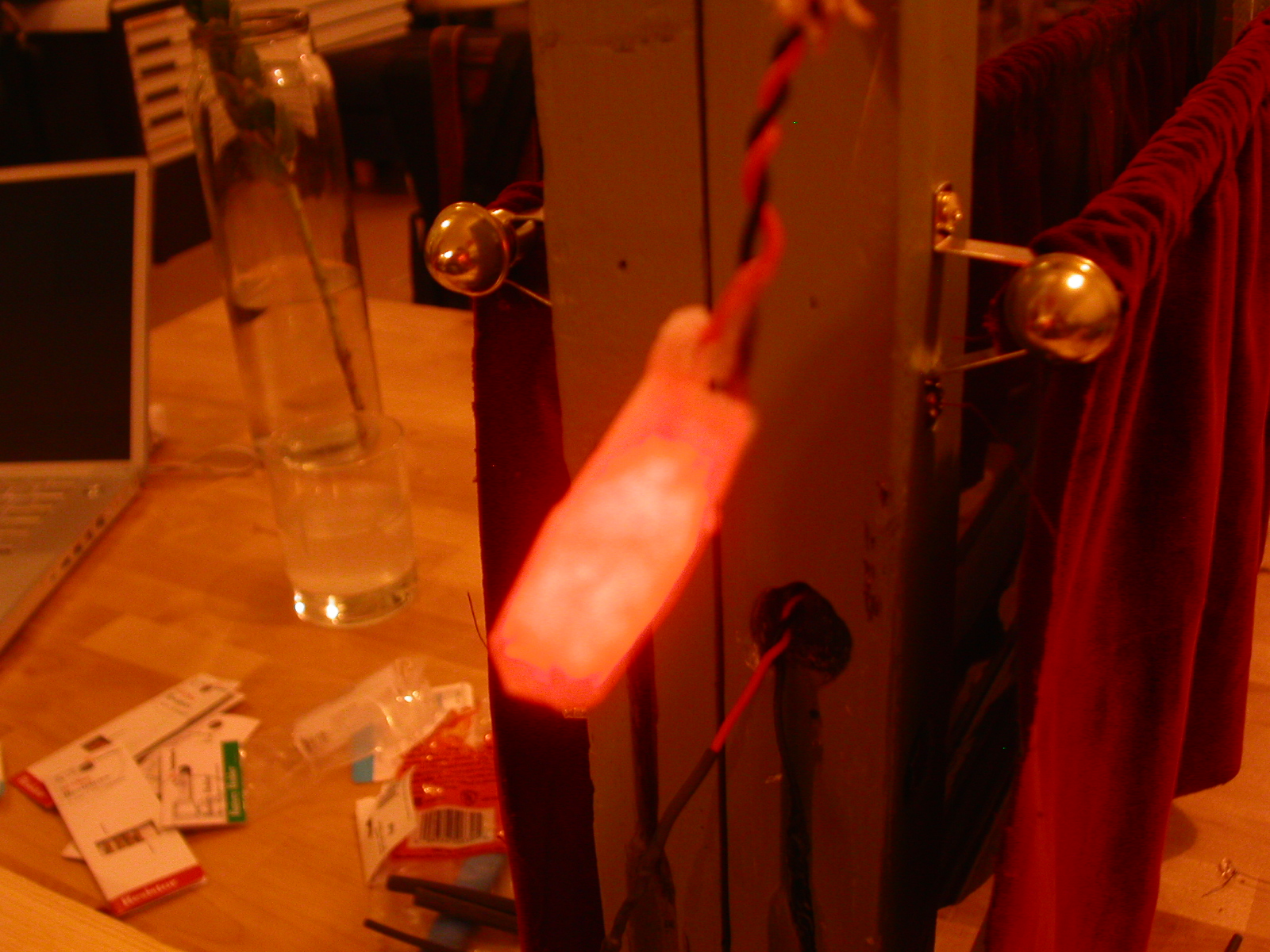
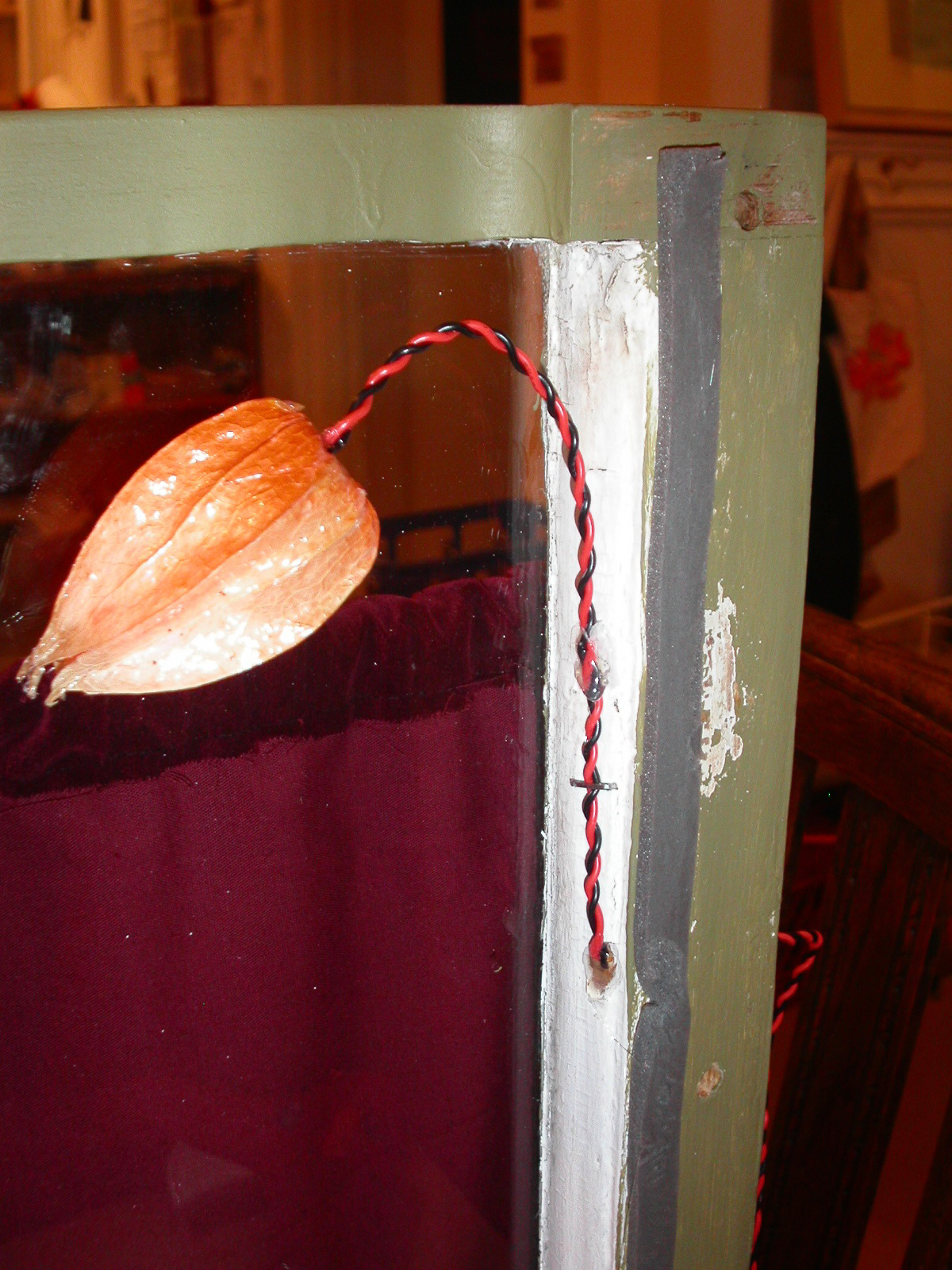
To make the light I found a ground cherry husk and wired an LED inside of it. It already looked like a lamp shade of sorts and had some really nice coloring on it, so I thought that it would make a nice warm glow with an LED inside of it.
First I dipped the ground cherry in water based polyurethane several times to keep it from drying out and to give it some strength so it wouldn't be so brittle. Then, I cut the front and back of the ground cherry using some sharp scissors to make a hole big enough to pass a wire and an LED through.
I used a 9V battery to power the 2.4V red LED and wired in two resistors to equal 330 ohms in order to protect the LED form burning out. See LEDs for beginners for more information about how to wire up and LED.
Once the LED was lit it looked a little too bright for the ground cherry, so I wrapped it up in several layers of saran wrap to diffuse the light. Randofo recommends using a plastic bag from the store to do this as well. Both methods seem to work well.
I then carefully threaded the LED and the wire into the ground cherry and put a dab of hot glue on the back of the ground cherry where it met the wire and on the wires inside the ant farm to hold the whole thing in place.
First I dipped the ground cherry in water based polyurethane several times to keep it from drying out and to give it some strength so it wouldn't be so brittle. Then, I cut the front and back of the ground cherry using some sharp scissors to make a hole big enough to pass a wire and an LED through.
I used a 9V battery to power the 2.4V red LED and wired in two resistors to equal 330 ohms in order to protect the LED form burning out. See LEDs for beginners for more information about how to wire up and LED.
Once the LED was lit it looked a little too bright for the ground cherry, so I wrapped it up in several layers of saran wrap to diffuse the light. Randofo recommends using a plastic bag from the store to do this as well. Both methods seem to work well.
I then carefully threaded the LED and the wire into the ground cherry and put a dab of hot glue on the back of the ground cherry where it met the wire and on the wires inside the ant farm to hold the whole thing in place.
Sew the Curtains and Make the Lid
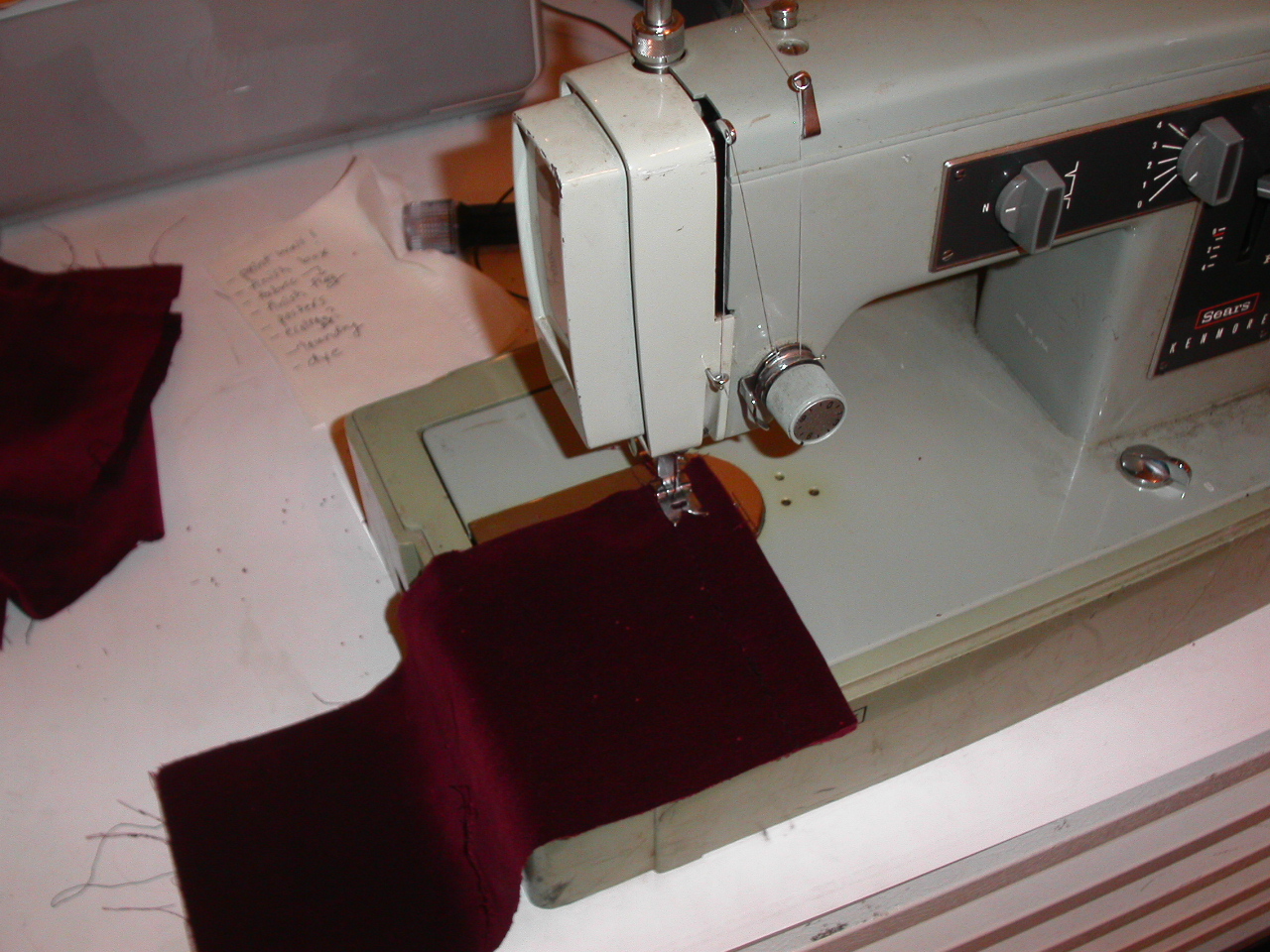

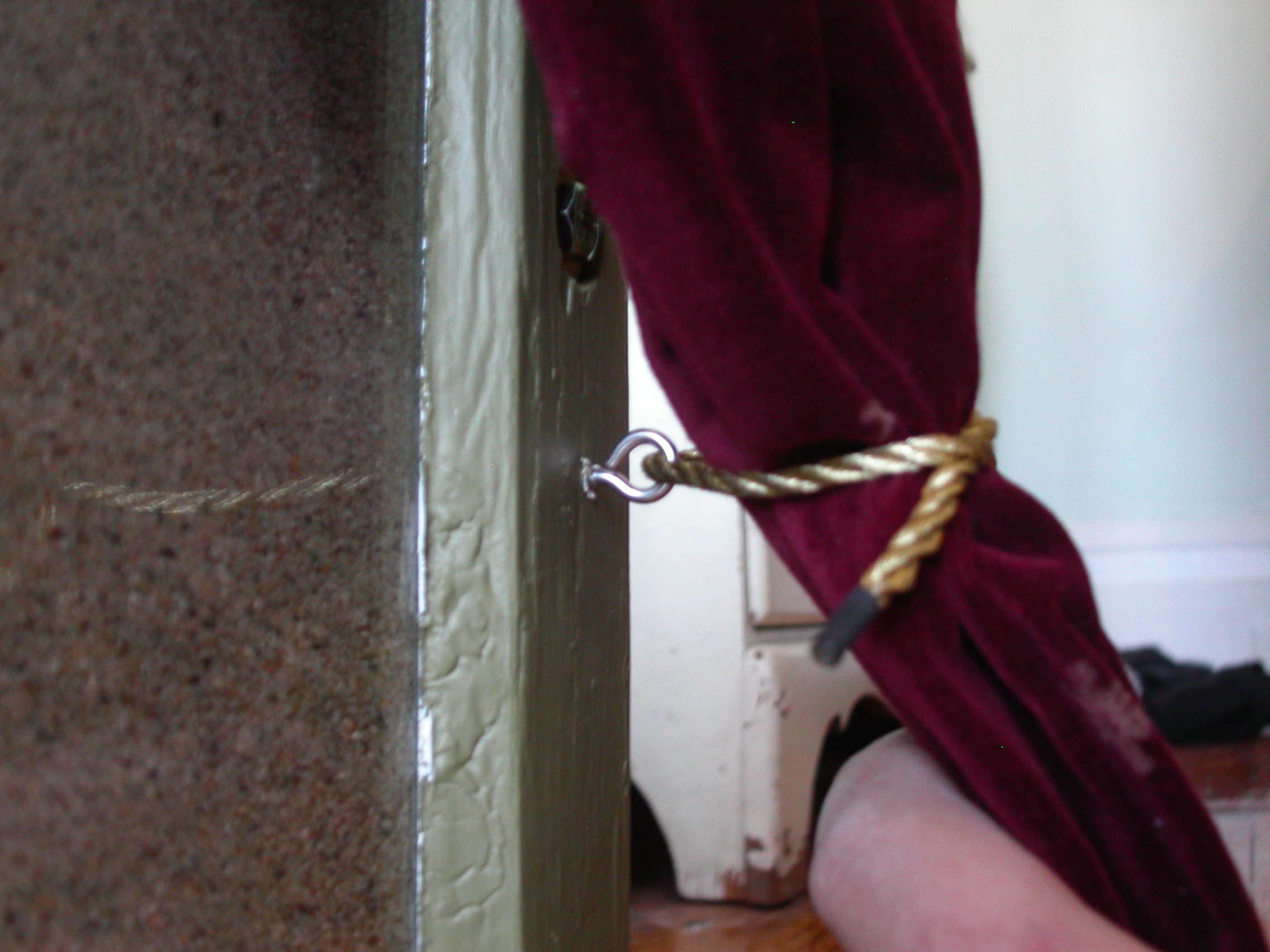
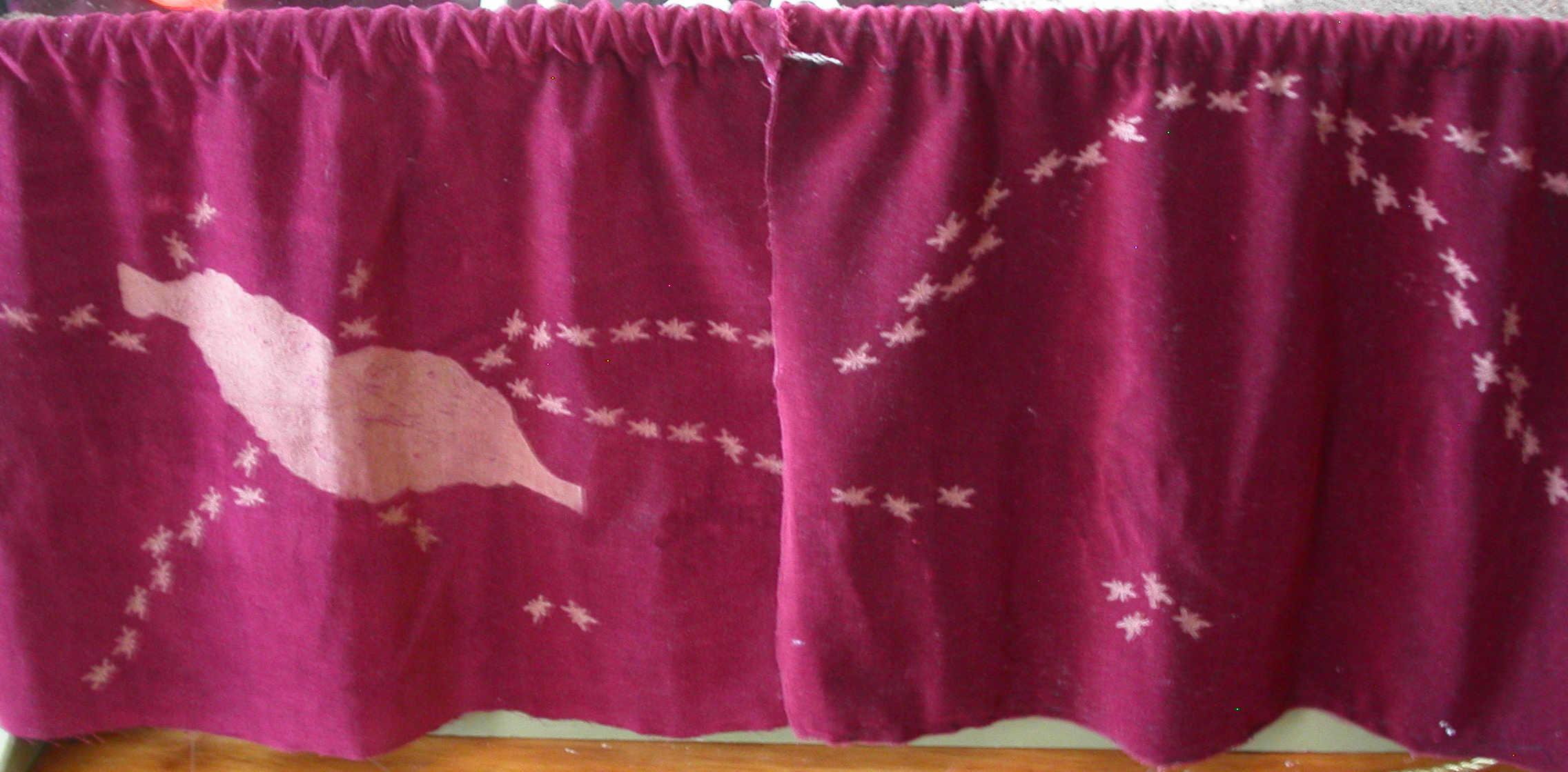
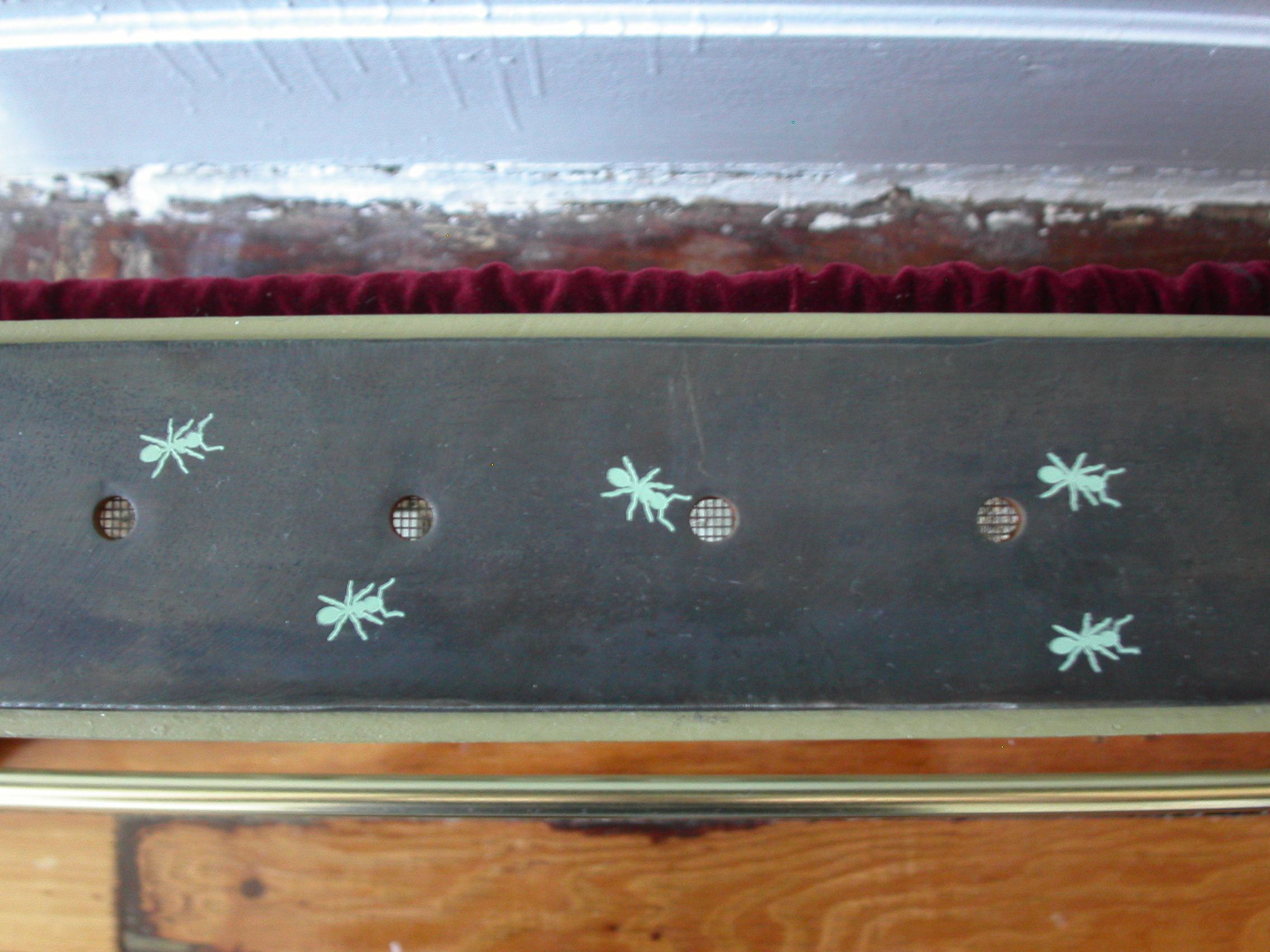
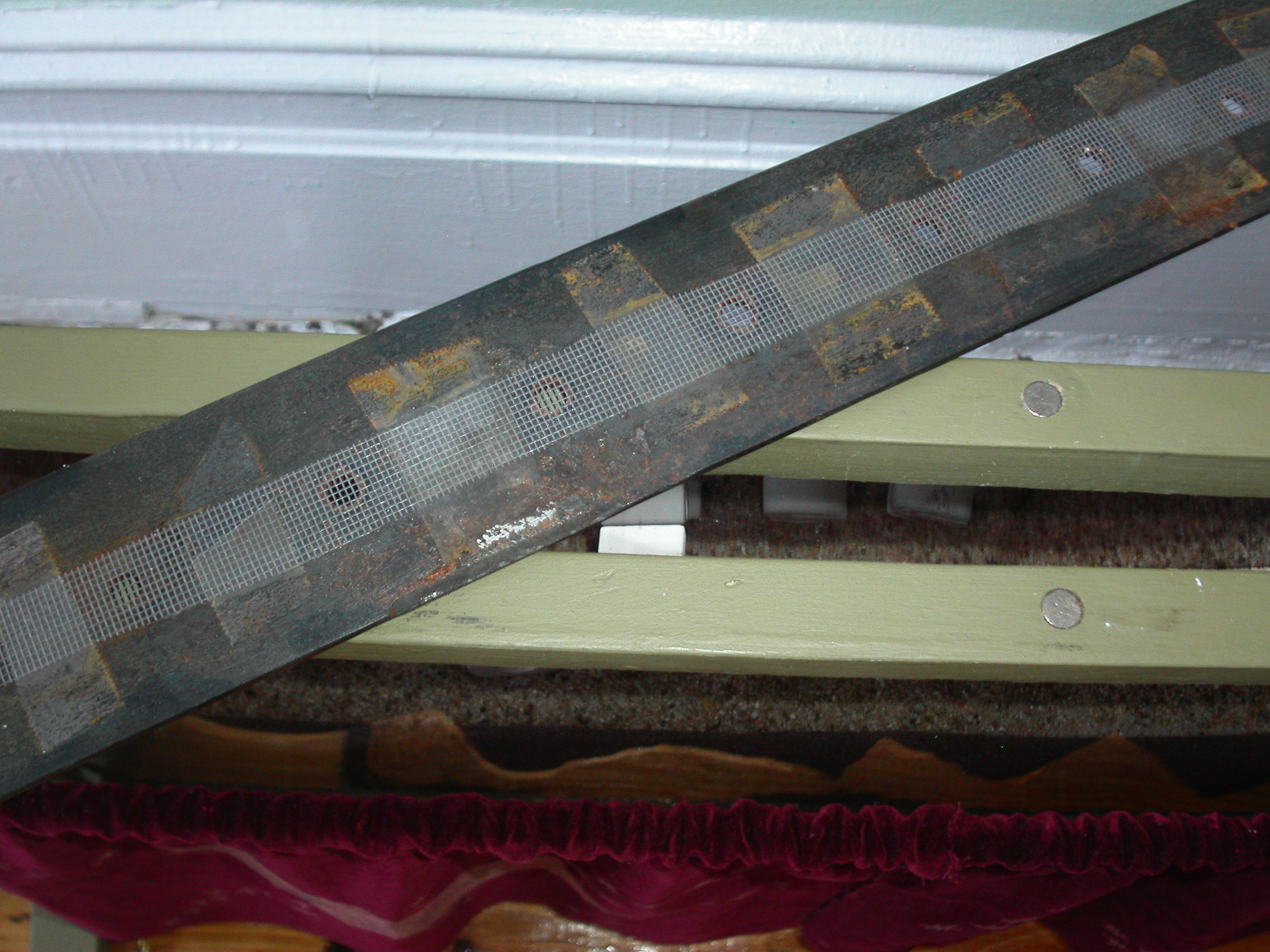
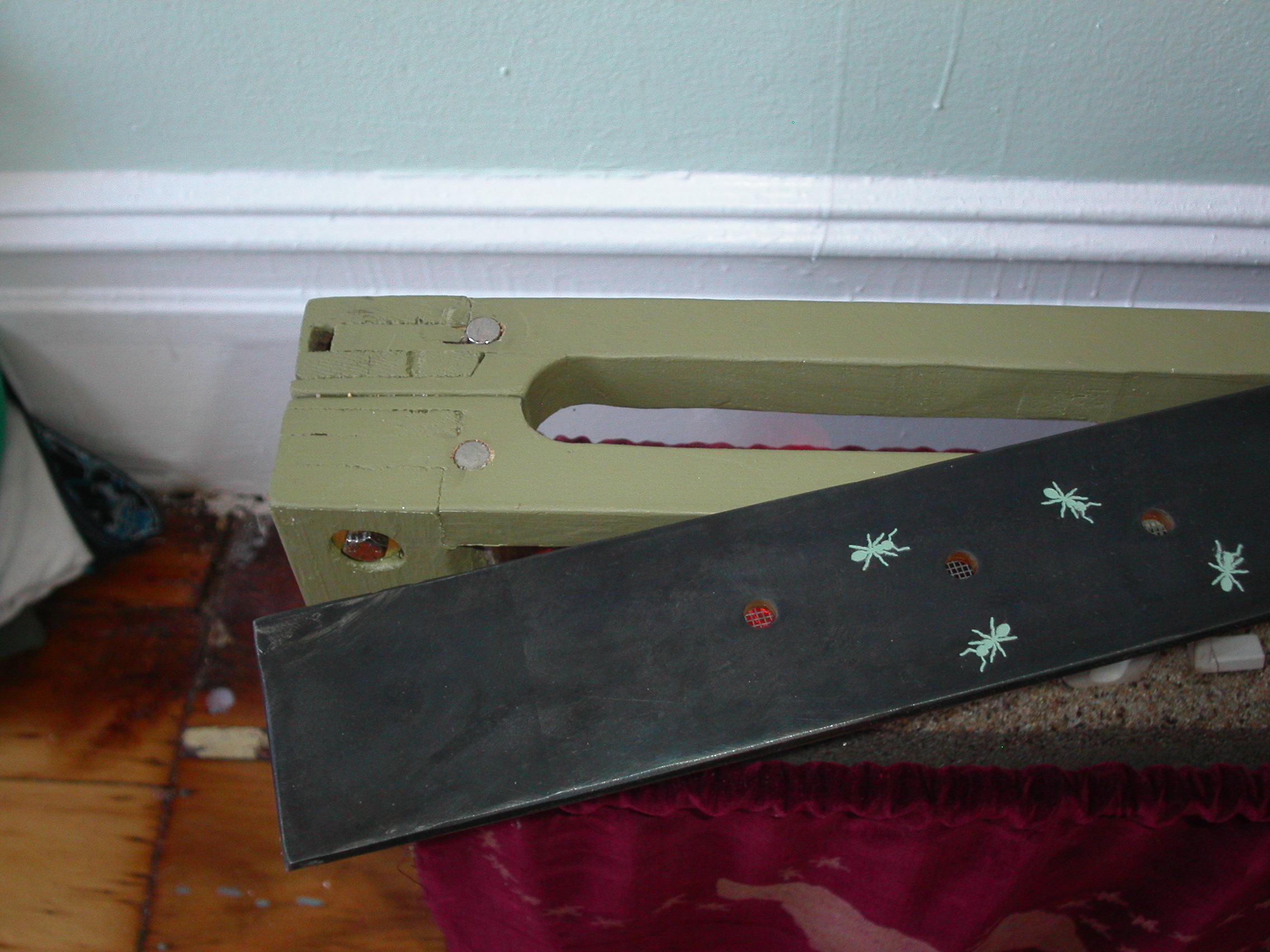
Curtains
With the curtain rods in place but no curtains it was time to do a little work on sewing the velvet. I bought about a yard of red velvet and cut it up into four panels that fit my ant farm. I sewed a small hem at the top of each of the panels for the curtain rod to slip into. I then took the curtains to the laser etcher at Instructables HQ and burned an ant graphic into the front of the curtains. The big blob on the left curtain is supposed to be a piece of kale, but I etched the velvet with just a little too much power to pick up all the detail in the image. For etching velvet I recommend settings of 100% speed, 70% power - this usually produces nice results.
I then sank some small screw eyes into the sides of the window and tied some gold rope around the curtains to hold them back so that the curtains could be retracted for ant viewing.
The .eps and .ai files that I used to etch the ants are included below.
Lid
I may have overdone things with the lid of the ant farm just a bit, but I have heard that ants can lift 20 times their own body weight, and so if I had enough of them in there, they might all be able to band together and bench press the cover right off! Well, not really, but I still wanted to make sure things would stay put.
I found a scrap piece of steel laying around the shop and drilled some 1/2" holes in it on a drill press. I then covered the back of the lid with window screen materials to make sure that the ants couldn't crawl through the holes. I then used the laser cutter to cut a quick stencil out of extra sticker paper I had from printing Instructables stickers of some ants just walking around aimlessly. I applied the stencil to the lid and spray painted the top of the led. When I removed the sticker material the paint was left right where I wanted it and the ants came out looking great.
Laser cutters and large pieces of sticker paper make awesome stencils. These are big time perks of working at Instructables HQ, but now with our new Win a Laser Cutter Contest you might be able to make you own laser cut stencils too!
The tried and true method of using a piece of paper with an image printed on it and an exacto blade works just fine too.
The final step to make the lid was to drill holes in the top the window frame to hold a couple of rare earth magnets that I had lying around. The magnets hold the lid in place with quite a bit force - so I am pretty sure that the ants won't be able to escape even if they do combine their strength and try to pry off the lid.
The illustrator file that I used to make the vector cut for the stencil is included below as well.
With the curtain rods in place but no curtains it was time to do a little work on sewing the velvet. I bought about a yard of red velvet and cut it up into four panels that fit my ant farm. I sewed a small hem at the top of each of the panels for the curtain rod to slip into. I then took the curtains to the laser etcher at Instructables HQ and burned an ant graphic into the front of the curtains. The big blob on the left curtain is supposed to be a piece of kale, but I etched the velvet with just a little too much power to pick up all the detail in the image. For etching velvet I recommend settings of 100% speed, 70% power - this usually produces nice results.
I then sank some small screw eyes into the sides of the window and tied some gold rope around the curtains to hold them back so that the curtains could be retracted for ant viewing.
The .eps and .ai files that I used to etch the ants are included below.
Lid
I may have overdone things with the lid of the ant farm just a bit, but I have heard that ants can lift 20 times their own body weight, and so if I had enough of them in there, they might all be able to band together and bench press the cover right off! Well, not really, but I still wanted to make sure things would stay put.
I found a scrap piece of steel laying around the shop and drilled some 1/2" holes in it on a drill press. I then covered the back of the lid with window screen materials to make sure that the ants couldn't crawl through the holes. I then used the laser cutter to cut a quick stencil out of extra sticker paper I had from printing Instructables stickers of some ants just walking around aimlessly. I applied the stencil to the lid and spray painted the top of the led. When I removed the sticker material the paint was left right where I wanted it and the ants came out looking great.
Laser cutters and large pieces of sticker paper make awesome stencils. These are big time perks of working at Instructables HQ, but now with our new Win a Laser Cutter Contest you might be able to make you own laser cut stencils too!
The tried and true method of using a piece of paper with an image printed on it and an exacto blade works just fine too.
The final step to make the lid was to drill holes in the top the window frame to hold a couple of rare earth magnets that I had lying around. The magnets hold the lid in place with quite a bit force - so I am pretty sure that the ants won't be able to escape even if they do combine their strength and try to pry off the lid.
The illustrator file that I used to make the vector cut for the stencil is included below as well.
Final Assembly
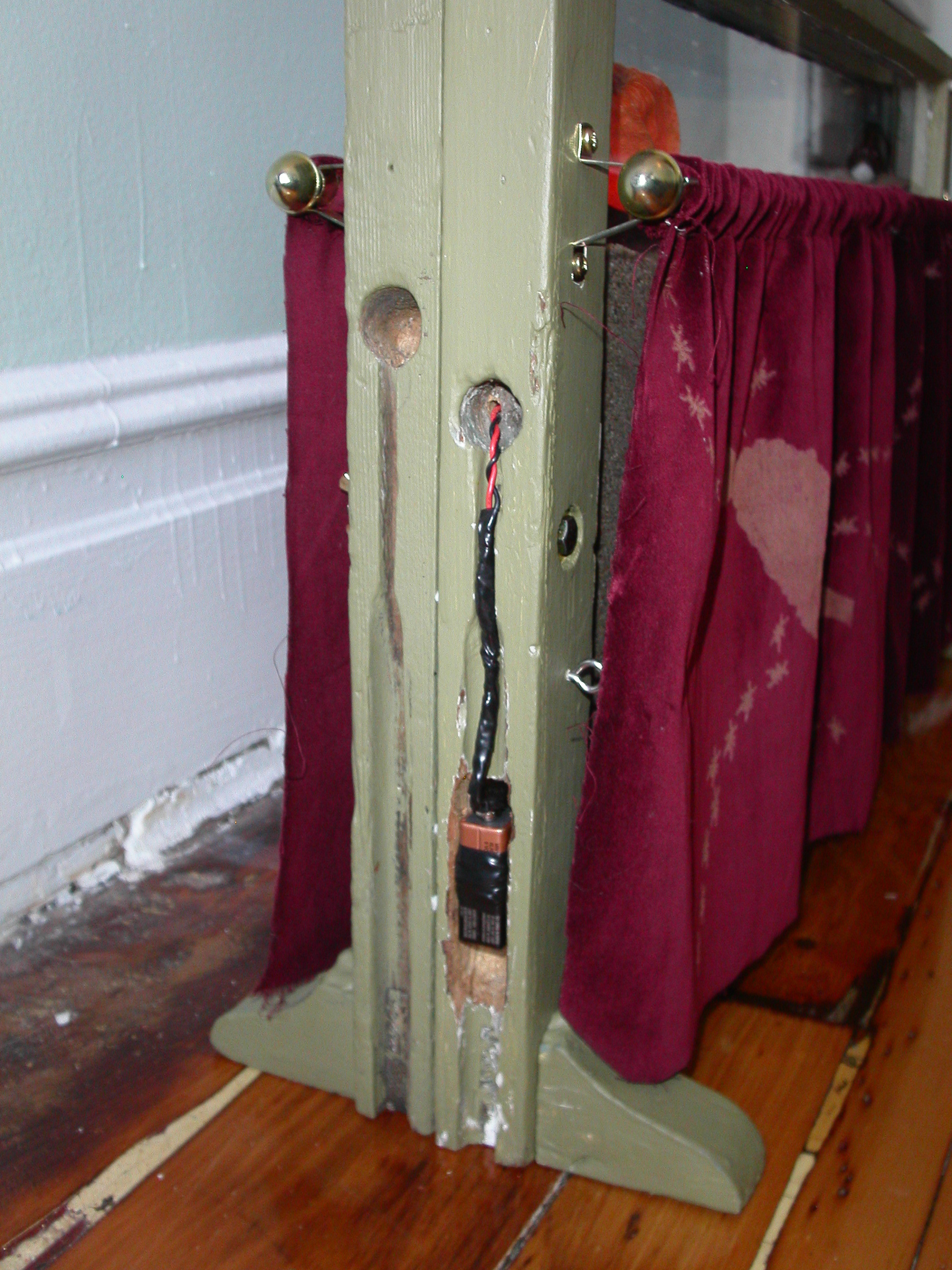
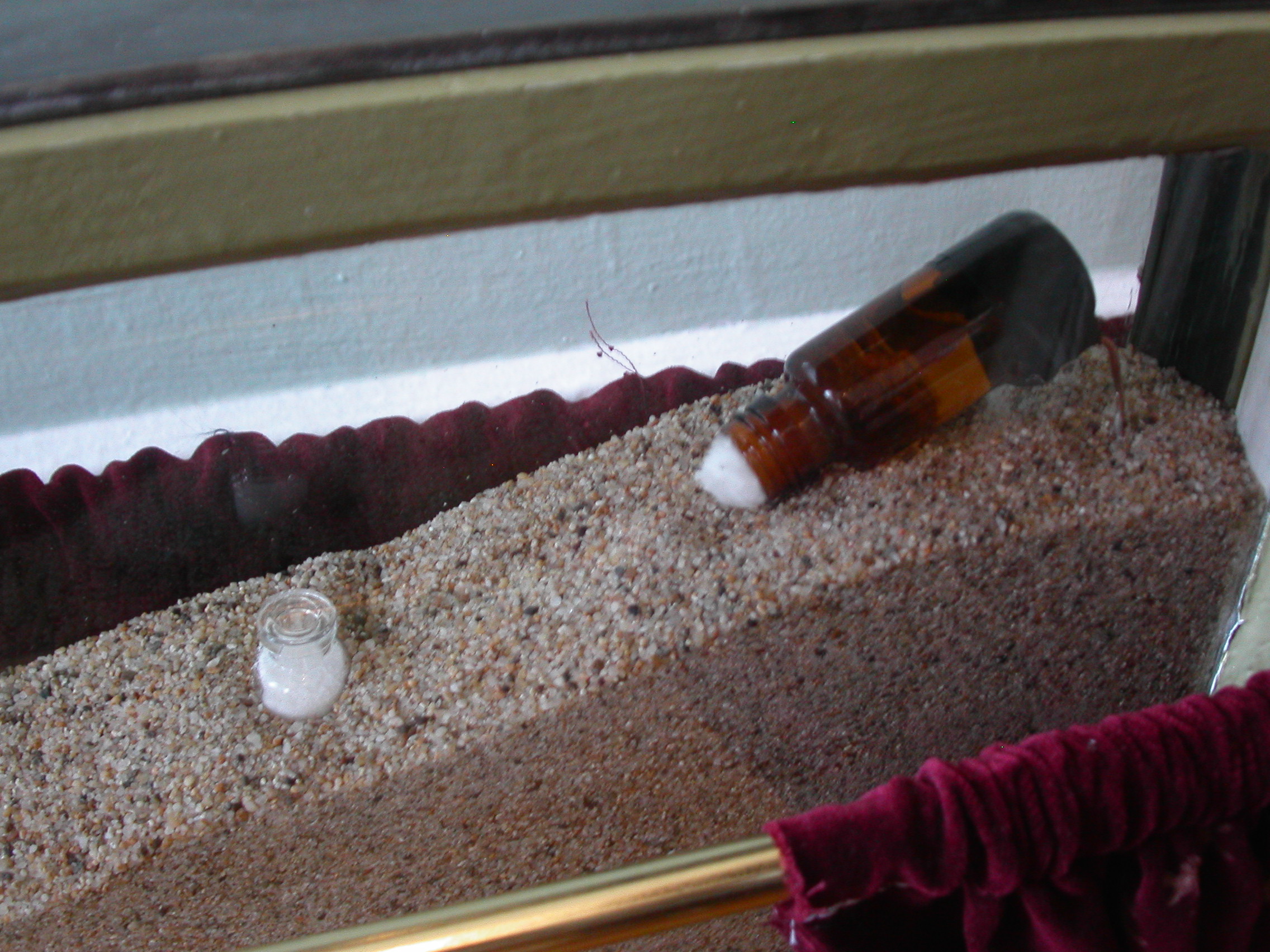
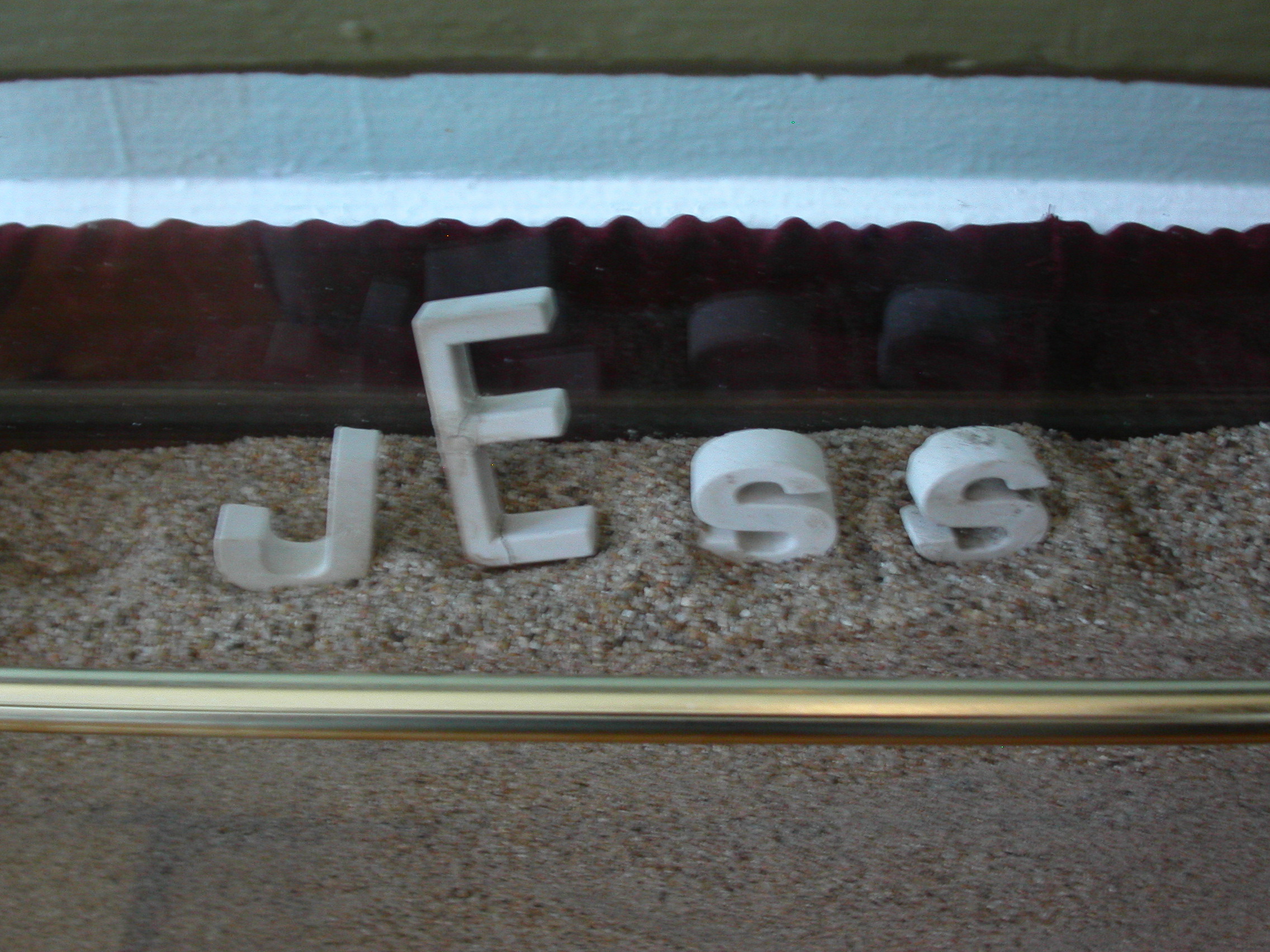
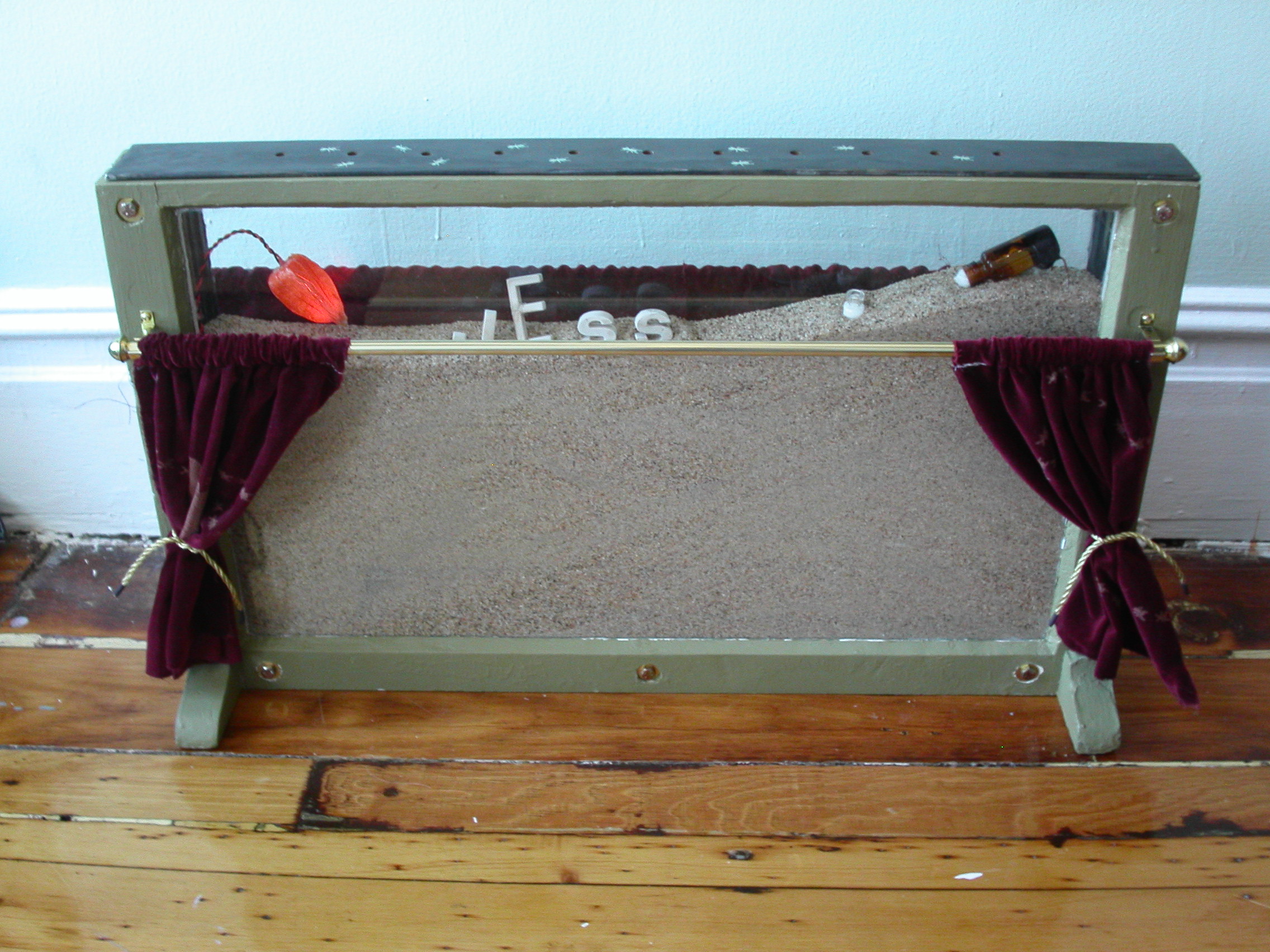
I notched out a small hole in the side of the window frame to fit my 9V battery that powered the LED light and tucked the battery away inside of it to hide it from view. There was already a channel cut into the window from where the counterweight used to sit when it was an actual window, so it didn't take too much time to use a chisel to carve out a hole big enough to fit the battery.
I then filled the ant farm with children's play sand (I specifically chose this stuff because it's washed and kiln dried so it won't hurt the ants). It took about 40 pounds of sand to fill the ant farm almost 3/4 of the way to the top. This makes the whole thing pretty heavy, but it's very stable.
The ant farm is pretty big, so if you are looking to make something a bit more portable I would recommend starting with some smaller windows.
The ants need food and water inside the ant farm since they don't have any way to forage it for themselves. I stuffed a piece of cotton inside of small glass jar filled with water and turned it upside down inside the ant farm so that the ants could have access to water. I also glued some legs made out of copper wire onto the back of the water jug to keep it inverted inside the ant farm.
The ants don't drink much, so even the small amount of water should last them a little while. I then took another glass vial and filled it with some sugar so that the ants could have a burst of energy to start their tunneling. I plan on feeding my ants a healthy diet of vegetable and fruit scraps once they get going, but I have read that sugar is a nice treat to get them going.
The last step in finishing the ant farm was to drop a few ceramic letters through the top of the ant farm and down onto to the sand to spell out my friends name. J, E, S, S spells Jess.
Oh yeah.
Populating the Ant Farm
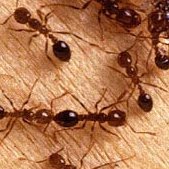
In order to start this first ant farm I decided to buy ants from a supplier online. Fifty ants are currently on order from AntsAlive. They are due to arrive in the next few days and I will post pictures of their tunneling when they start digging.
AntsAlive reports that the ants could last anywhere from one month, to up to a year - although ants living for such a long time is "very unusual". Most of the ants will probably die in three months, at which point we can make changes to the ant farm and try catching some ants ourselves.
It's possible to catch ants in the wild. If you know what you are doing you might even be able to find a queen. If you are lucky enough to find one and get it into your ant farm then the ants can reproduce and they won't die after a few months. This is quite an achievement in the ant farm world, and so once things are up and running, maybe I will go ant hunting and see what I can find.
If things work out, a "How to hunt ants" instructable could be on the horizon...
AntsAlive reports that the ants could last anywhere from one month, to up to a year - although ants living for such a long time is "very unusual". Most of the ants will probably die in three months, at which point we can make changes to the ant farm and try catching some ants ourselves.
It's possible to catch ants in the wild. If you know what you are doing you might even be able to find a queen. If you are lucky enough to find one and get it into your ant farm then the ants can reproduce and they won't die after a few months. This is quite an achievement in the ant farm world, and so once things are up and running, maybe I will go ant hunting and see what I can find.
If things work out, a "How to hunt ants" instructable could be on the horizon...